This is the fourth in a series of posts based on personal conversations I’ve had with Mr. Robert Rotoloni, author, Nikon historian, and president of the Nikon Historical Society. If you’d like to know more, I recommend reading parts 2 and 3 as they cover a tremendous amount about Nippon Kogaku, from before, during, and shortly after the war.
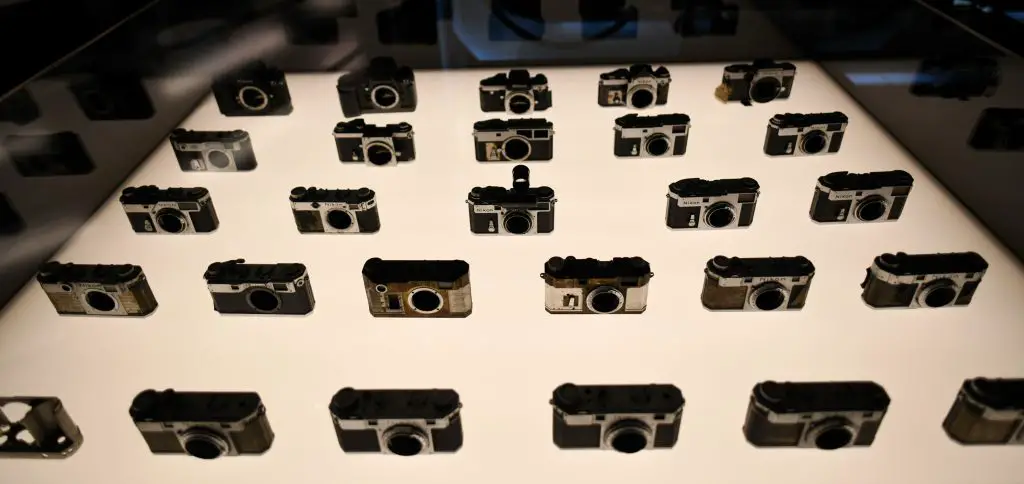
The last two times I visited Robert, we discussed Nikon prototypes. Robert shared with me a great deal of knowledge he has learned first hand over the years in his visits to Nikon and JCII headquarters and in various conversations he’s had with a number of important people working for Nippon Kogaku at the time. From Masahiko Fuketa to Shigetada Fukuoka, Robert has learned directly from the people who were there in the company’s earliest days after World War II when they became a civilian company, and one that produced cameras.
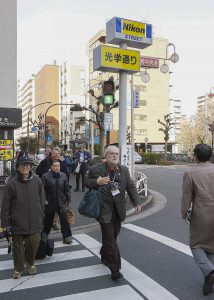
Much of the information in this article can be found in Robert’s book, “The Complete Nikon Rangefinder System” which was published in 2007. Robert has continued to research Nippon Kogaku’s history in the 13 years since that book was published, so some of what he shared with me has not appeared in his book. Robert was gracious enough to share with me several high quality color and black and white photos that he and other members of the Nikon Historical Society have taken over the years, most of which have never been posted online.
Robert’s book has 528 pages and only covers the rangefinders and is something I highly recommend to any collector, whether they have an interest in Nikon or not. The history of Nippon Kogaku is massive, and I could never begin to scratch the surface of the whole story in a simple blog post, so I will share with you a very abbreviated version of our last two discussions and the images he gave me.
Mother One
In June 1991 and once again in February 1996, Robert had a chance to meet Masahiko Fuketa in person and pick his brain about Nippon Kogaku’s history. Robert was amazed at how much knowledge Fuketa retained, and on the occasion he was stumped, Fuketa would do some research and promise to get back with his answers. This was a promise Fuketa continued to keep up until his death in February 2001.
Development of what would become the Nikon rangefinder began less than a year after the war ended in April 1946. Fuketa was coordinator of the design committee, which consisted of only 3-4 people. Although Fuketa’s main priority was the new 35mm rangefinder camera, he also worked on a 6×6 prototype and an X-Ray project.
In April 1948, Fuketa moved from the design department to the camera assembly shop as the Production Manager and Supervisor of camera production overseeing the creation of the first Nikon cameras.
Throughout the years, some people have unfairly labeled the Nikon rangefinder as a Contax copy and while the bodies of the two cameras share some of the same visual cues and a very similar lens mount, there were many important differences between the two cameras. For starters, the Nikon shutter is not at all like the Contax, but instead is based on that from the Leica. The shutter curtains themselves were made in cloth and coated with a rubber like material. Sourcing the rubber was very difficult as supplies were not only hard to come by, but also had to be purchased from a variety of suppliers including shoe companies and a supplier who made raincoats.
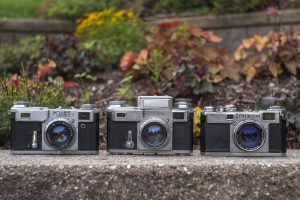
The rangefinder was also based on a Leitz design and was one part of the camera that Nippon Kogaku had a good amount of experience with, making rangefinders for the Japanese military during and before the war.

While Nippon Kogaku was working on their new camera, supplies were very difficult to come by as there was still a lot of damaged infrastructure in Japan and getting the metal and glass needed to make new products was difficult. Some prototype Nikkor lenses used glass sourced from before the war. Even the Ohi factory where the camera was being built didn’t have any heat, so Fuketa and his workers often had to wear heavy clothing and gloves while working to stay warm.
A grand total of 21 prototypes were made of the first Nikon camera. Each prototype was numbered with a serial number starting with ‘609’ which was chosen to commemorate September 1946 when the design of the Nikon camera was first completed. In the Japanese calendar, 1946 was the 2006th year, and September is the ninth month, so the prefix of all early Nikon rangefinders started with a 609 number.
The very first Nikon prototype was given serial number 6091 and was entirely hand made. The front plate was carved from a single piece of 1/4th inch thick metal and looks different from all the other prototypes. The camera was never finished and is currently in Nikon’s museum and is affectionately referred to by collectors as the “Mother One”.
As early as the 4th prototype, number 6094, the camera began to take on the familiar shape we now know as the Nikon One, featuring the Contax lens mount, a shutter, and an engraved Nikon logo.
Much of the work in creating early Nikon rangefinders was done by hand. One especially involved step was in the groove that ran around the perimeter of the body for which the door would slide into to keep light out. This groove was not part of the original casting process for the body and needed to be hand formed to perfectly match the door that would be attached to it. As a result, all early Nikon rangefinders have the body’s serial number stamped into the inside of the door to indicate which door that body was made for.
About half way through the Nikon S2’s production, Nippon Kogaku would finally be able to incorporate this groove into the machining process without having to hand form each individual body. When purchasing an early Nikon rangefinder, you should check that the serial number of the back and the body match.
Film was extremely expensive in Japan after the war, so in an effort to maximize economy, an exposure size of 24mm x 32mm was chosen for the Nikon One as it allowed for up to 40 exposures on a single 36-exposure roll of film, plus the 1.33:1 aspect ratio worked better when making 8×10 prints. This would prove to be a problem for western photographers and resulted in the later Nikon M which changed the exposed image size to 24mm x 34mm, still not the same as western cameras, but closer.
Another challenge of these early cameras was in the chrome plating as Nippon Kogaku struggled to find a consistent process that delivered the look and durability that they demanded. The chrome plating process on early Nikon rangefinders changed a variety of times, at one point even involving nickel plating, which resulted in cameras with duller or shinier finishes. This can be seen in collections of early cameras today as not all will have the same finish.
The Nikon II
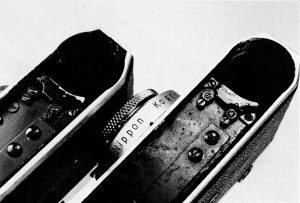
Although Nippon Kogaku never made any civilian products prior to the war, they did partner with Seiki Kogaku (Canon) to help them build their first camera, the Kwanon, which would later become the Hansa Canon. Canon built the body and the shutter, but Nippon Kogaku provided them with lenses, the lens mount, and the entire optical viewfinder and rangefinder system.
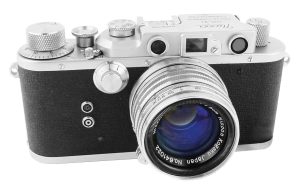
This relationship with Canon would resume after the war, and Nippon Kogaku would be a primary supplier of Nikkor lenses using the M39 screw mount for Canon’s rangefinder bodies. Nikkor lenses were also sold to Nicca and a few other companies as well but Canon was their biggest customer. Although Nippon Kogaku was hard at work on the Nikon rangefinder, they were an unproven maker of cameras, but their lenses were already well respected so a bulk of their income was coming from these lenses, not from their cameras.
Nippon Kogaku’s contract to build Nikkor lenses for Canon would expire in March 1948 which eliminated one of their primary sales channels. Although they would still sell lenses to Nicca and other companies, they found themselves with a surplus of lenses.
Perhaps in an effort to move more M39 screw mount lenses, in September 1948, Masahiko Fuketa would submit a proposal for a Nikon II rangefinder that would have the following specifications:
- Leica M39 Screw Mount
- Flange Focal distance of 28.8mm (the distance from the lens flange to the focal plane, the Nikon camera’s was 34.85mm)
- 24mm x 36mm exposed image size (original Nikon rangefinders exposed 24mm x 32mm images)
- Rangefinder with 80mm base length and 0.75x magnification
- Self-timer
The creation of a Nikon II rangefinder with a Leica screw mount was favored by a large number of people at Nippon Kogaku as it would have likely been easy to sell and would have helped to move their growing supply of M39 mount lenses.
The Nikon II design was approved in March 1949, and a production order for 15 prototypes was issued in July 1949. The same day the order for 15 prototypes was given, a second order was given to make 50 more. For reasons we don’t know, the second order of 50 was later cancelled, and the first order for 15 was reduced down to only 2.
Of the two prototypes ordered, serial number L 1101 was known to exist for years and other than the presence of a self timer, seemed to meet the requirements defined for the Nikon II, even though no other “L” prototypes were known to exist.
In the gallery above, we can see two mostly finished cameras with the M39 screw mount, L 1101 and L 11004. At first glance, they look nearly identical, but there are differences. L 11004 appears to be made first, as it lacks the Nippon Kogaku shield logo, instead having Nippon Kogaku Tokyo written in block letters. It also has an older design accessory shoe from the Nikon One era, and an almost entirely flat front plate. L 1101 has a newer shoe similar to the one found on the Nikon S and has a completely different front plate with a curve below the ‘Nikon’ logo and a hump around the viewfinder window.
Curiously, both of these prototypes look heavily worn with scratches and dings on almost every surface, suggesting they were used and possibly abused countless times. Even the film pressure plate inside of L 11004 shows heavy wear. The amount of wear on both of these cameras is greater than cameras I’ve seen that were professionally used. But who used them and why? Were they given to a professional photographer and used in the field for many years? If so, why has there never been any account of a photographer using them? Was this a result of some type of rigorous stress test done by Nippon Kogaku? If so, why haven’t there been other non M39 prototypes showing similar wear? We’ll likely never know the answers to these questions.
In March 1999 at a show in Tokyo to commemorate Nikon’s 50th anniversary of making cameras, three never before seen screw mount prototypes were shown that looked quite a bit different from L 1101.
Each of the three prototypes were different from each other. The first was serial number L 50041 and looked like a mostly complete camera but with a completely different stepped top plate beneath the rewind knob and behind the circular rangefinder window. This camera also lacked a self-timer like the previous two prototypes, but otherwise seemed to have met all of the requirements set for the Nikon II.
The other two were less finished cameras that were taller than any other Nikon production or prototype camera seen before them and had a pronounced “brow” that overhung the lens mount. Both had features that looked like they were lifted from the Contax rangefinder such as the self-timer and a much wider rangefinder base. While exact measurements were not taken, they more closely resemble the 90mm rangefinder base length of the pre-war Contax cameras than the 60.5mm length on other Nikon rangefinders.
One of the two Contax style Leica screw mount Nikon rangefinders was finished in chrome with the usual Nippon Kogaku logo on the front plate and a very tiny ‘Nikon’ name plate above the lens mount, but the other, finished in raw brass had a very unique looking bottom curved ‘Nikon’ name plate not seen on any other prototype.
Nikon S2 Beta
Many people will point to the Nikon SP as the company’s most important rangefinder as it was the model that went head to head with the Leica M3, but I’d argue the Nikon S2 is the one deserving of that honor. Of all Nikon rangefinders, the S2 was the one with the most number of changes from it’s previous model and it was the one that first helped gain attention to Nippon Kogaku’s ability to produce their own camera. Prior to the S2, Nippon Kogaku was seen by most of the world as a pretty good lens maker, not a producer of what would eventually become the world’s most successful lineup of cameras.
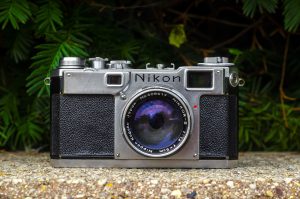
Getting to the finished version of the S2 understandably took a few tries, so it’s probably no surprise to know that there were some S2 prototypes along the way which help trace the development of this model. The earliest prototypes of what the S2 would become clearly emphasize a larger viewfinder, but which features were in development first, and which were added later?
These next few images appear to be an early S2 prototype. The first two are of a chromed body with serial number T 1201 and the third image is a raw brass body that looks almost identical to the other. The front plate of both cameras has the bulge in front of the front focusing wheel just like the Nikon One, S, and M, and it has a film advance knob like those models, but it has a much larger viewfinder and rear eyepiece like the S2. It might even be larger than the production S2s, but it’s hard to tell from these images without something to compare them to.
In both bodies you can see the provisions for a self-timer on the front of the camera which the S2 didn’t have and some kind of lever beneath what looks to be the rewind knob which suggests this camera has an adjustable diopter like you’d find on a Leica. The accessory shoe is also recessed into the top plate unlike any other Nikon rangefinder.
The back of the camera has a circular control wheel below the shutter speed dial that has a knurled edge suggesting it rotates, but as to what function it does is anyone’s guess. There’s also some kind of sticker on the rear door that might say 6F4BT, but I have no idea what it means.
It is commonly believed that while the Nikon S2 was in development, Leitz released the Leica M3 and Nippon Kogaku realized that a film advance lever was a requirement, but that wasn’t the final change to the camera. The viewfinder was going to be larger for sure, but how exactly would it work?
The final product would have only a single 50mm projected frame line within the new viewfinder, but these next few images suggest a few different options were considered. From a single viewfinder with pluses, to one with multiple aspect ratios, it is clear that Nippon Kogaku experimented with a couple of different options. Before anyone asks, neither I nor Robert have any idea what those saw-tooth shapes are in the example with multiple frame lines.
This last glimpse of a prototype S2 comes in these two pictures of serial number 6136958 which show a very different shutter speed dial with speeds from 1 second to 1/1000 on a single dial. The shutter speed dial appears to also control the flash sync speed, with the letters “FP” visible.
If the flash sync was set with the primary shutter dial, then there would have been no need for a secondary flash sync dial under the rewind knob, which on this prototype is missing. A single shutter speed dial would have gone a long way towards bridging the gap between the S2 and the Leica M3 which was already out by the time of the S2’s release. Why this wasn’t incorporated into the final design however, is anyone’s guess.
Nikon SP Part Deux
From the moment Leitz unveiled the Leica M3 in December 1953, the world was put on notice about what a top of the line 35mm rangefinder should be. Nippon Kogaku was still working on the S2 and when they first saw the M3, they knew they had to go back to the drawing board, but the S2 was too far along in it’s development. Nippon Kogaku was able to quickly give the camera a rapid wind lever, but it still lacked many of the M3’s new features like the variable frame lines in the viewfinder.
Nippon Kogaku knew they had their work cut out for them, so when work began on the S2’s replacement, the Nikon SP, they had to come up with something special. Upon it’s release in September 1957, the Nikon SP featured twin viewfinders that represented six different focal lengths from 28mm all the way to 135mm, a provision for a motorized film transport, and about half way through it’s production, came with titanium shutter curtains, all features the M3 lacked.
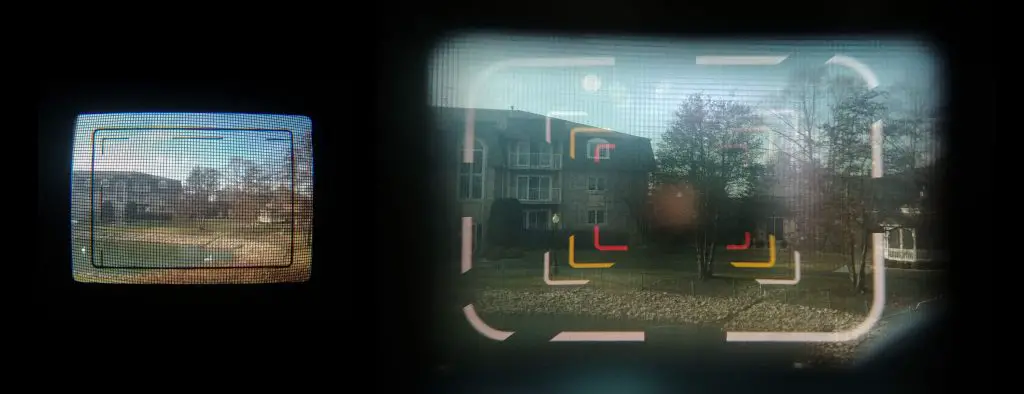
The Nikon SP was heralded as Nippon Kogaku’s most advanced 35mm rangefinder camera…or was it?
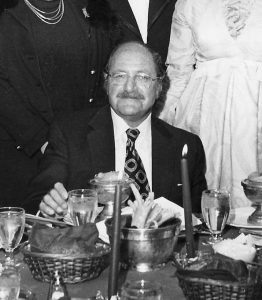
By the time the SP first went on sale, the writing was already on the wall for rangefinder cameras as professional photographers were more and more preferring the Single Lens Reflex. Nippon Kogaku foresaw this transition and at the same time as the SP’s development, began work on a new Nikon reflex camera. That camera would make it’s debut in March 1959 and would go on sale shortly thereafter.
The Nikon F took the world by storm and would quickly become the company’s best selling model. The problem was that despite Nippon Kogaku’s success, they were still a rather small company with limited production space, and demand for the Nikon F quickly outpaced that of the Nikon SP. Nikon’s American importer, Joseph Ehrenreich demanded Nikon Fs faster than they could be made, and as a result, Nippon Kogaku’s rangefinder production and development would slow to a crawl. Two additional models, the S3 and S4 would be released after the SP, but they were lesser models and did not offer anything new over the SP.
For decades, it was assumed rangefinder development ended after the SP, but rumors of a so-called SP2 began to leak into Nikon collector’s groups. Finally in 1988, Robert was able to examine two Nikon SP2 prototypes, the first being an unfinished and unnumbered example completely void of any engravings except T-1887-3 and a sticker with the Japanese calendar date 38-5-10, which is May 10, 1963.
The second camera however, looked much more like a finished model. Featuring all of the typical engravings of a Nikon rangefinder that you’d expect, including serial number 6800004, this camera looked as close to a production model as you might expect. The camera was fully functional, featuring foil metal curtains just like the SP and many of the same traits of the SP. The biggest and most obvious difference between the SP2 and SP was the variable focus viewfinder and centrally located rear viewfinder eyepiece. Instead of being off to the left like every other Nikon rangefinder, the SP2’s viewfinder is just barely left of center behind the accessory shoe.
Instead of 6 different frame lines from two viewfinders like the SP, the SP2 has a single “varifocal” zoom viewfinder which accurately shows a 35mm to 135mm image without the use of frame lines. Although the SP2 lost the 28mm length of the SP, this was still an amazing feature to have, as only the Kodak Ektra from 1941 had a varifocal viewfinder.
These SP2 prototypes were thought to be the only in existence until 1996 at the Nikon Historical Society’s 5th convention on Tokyo when a third SP2 prototype, with serial number 6800005 made it’s debut. Looking very similar to 6800004, this third prototype differed in it’s viewfinder and the cosmetics of some of it’s controls. Instead of a varifocal viewfinder, this had a variframe viewfinder with moving frame lines.
Factory records indicate that both 6800004 and 6800005 were produced sometime in 1966 or 1967, but exact dates are not known. Who was in charge of developing this camera, and why did they take nearly 10 years after the release of the SP to put together a nearly finished example? Was there ever a chance that these cameras could have been sold, or were they special orders from some photographer who demanded an SP with an improved viewfinder? Also, what ever happened to 6800001 through 3? Did they even exist? We’ll likely never know these answers.
An All New Nikon Rangefinder
With every Nikon rangefinder starting with the original model through the SP2 prototype, each camera evolved from the model that preceded it. The most significant jump came with the S2 over the original S, but every model shared at least something with a previous Nikon rangefinder.
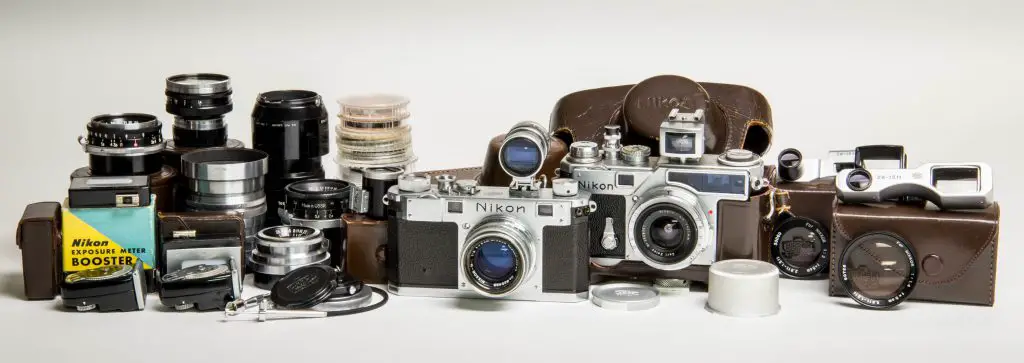
The most exciting thing for me when looking at prototypes is being able to get a glimpse into the “what if” of a product. What if Nippon Kogaku had completely started over with an all new Nikon rangefinder from the ground up, eliminating any legacy development of their original model, including technologies like TTL metering and a bigger, and easier to use lens mount than the Contax inspired Nikon S-mount?
As early as 1969, rumors of an experimental Nikon, or an SPX began to circulate. There were no hard facts or even so much as a drawing of what the camera looked like, but in the mid 1970s, Popular Photography editor Norman Rothschild mentioned once again the possibility of an experimental rangefinder, but it had yet to be seen.
That changed in 1996 at the Nikon Historical Society’s 5th convention in Tokyo when several prototypes were shown off, including the first look at the Nikon SPX.
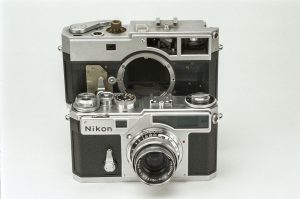
As had been rumored, the SPX was a complete departure from nearly everything about the original model. Sharing nothing but a passing resemblance to the Nikon SP, the SPX was built on the chassis of the Nikon F. It was both taller and wider any any other rangefinder. Upon handling it, Robert Rotoloni took the back off and swapped it with the back from a Nikon F and it fit perfectly, confirming it’s larger size.
Instead of the Contax bayonet mount that came on every other Nikon rangefinder, was an all new and much larger bayonet mount that looked exactly like the Nikon F-mount, but backwards. Even the location of the F-mount’s release button was near the 9 o’clock position, rather than 3 o’clock.

Since the SPX was never completed, the only lens known to ever have been made using the SPX’s bayonet mount was an adapted Nikkor-N 5cm f/1.1. This lens, with serial number 740002 is outside the range of known f/1.1 rangefinder lenses so was likely purpose built for this camera. The image to the left is the only one known to exist.
If this wasn’t enough, the SPX would have come with Through The Lens, or TTL metering, by way of a movable exposure meter that would swing into position in front of the film plane and then upon pressing the shutter release, swing back out of the way as not to disrupt the path of light onto the film. This system was very similar to what came in the Leica M5 which wasn’t released until 1971.
There is an obvious window on the top plate of the camera likely showing a meter readout, but it is not clear if this was also duplicated within the viewfinder.
The SPX prototype had a sticker on the back with the Japanese calendar date 37.10.1 which is October 1, 1962 which suggests the SPX was in development even before the SP2!
Only one SPX is thought to exist and unlike the SP2, it was never finished. This prototype does not feature the Nikon or Nippon Kogaku logos anywhere on it, is missing a front body covering, the meter is missing, there’s no rewind lever, speed dial, shutter release, or shutter.
Had the SPX been completed, it’s unlikely it would have even been called the SPX as the camera shares almost nothing in common with the SP. It would have been extremely expensive, and likely out of the reach of all but the professional photographer, but still, it’s a heck of a lot more fun to play “what if” when you can actually see it!
Odds and Ends
While a bulk of this article looks at the most significant Nikon rangefinder prototypes, Robert noted that there were a few others. Most of these are just variations on cameras that were made and possibly even one offs created by a bored technician with no intention of them ever being put into production, but I think that makes them even more interesting.
This first one can be found in a tray of Nikon prototypes found in Nikon’s basement and looks to be a run of the mill silver dial Nikon S2, but with an M39 Screw Mount. We know that Nippon Kogaku experimented with M39 Nikon rangefinders in the late 1940s, but all information we have on them suggests the plans were scrapped.
The S2 wasn’t released until 1955, so why does this prototype exist? The workmanship on this is rather crude with the curved part of the mount going right through the Nikon logo, and the hole where the fine focusing wheel should be is obviously filled in. Was there a renewed interest in making a screw mount Nikon again or did someone just hack this camera together?
This next camera looks like a normal Nikon SP showing off the optional low light rangefinder illuminator that was available for it, but if you look closely at the front and rear viewfinder windows, there’s only a single opening, instead of two.
The black dial on the top plate that is used to change the focal length of the main viewfinder has the numbers ’35’, ‘5’, and ‘10.5’ on it suggesting that a version of the SP was created that could show 35mm, 50mm, and 105mm in the main viewfinder, unlike the production SP that went from 50mm to 135mm.
The Leica M3 has a main viewfinder that supported 50mm through 135mm, but the Leica M2 went from 35mm to 105mm like this, so perhaps Nippon Kogaku had plans for a direct competitor to the Leica M2. Had this camera been made, it might have even been cheaper to produce since the secondary viewfinder could be eliminated altogether and perhaps that’s why it was never made.
Another oddity is camera M 1101. Normally cameras beginning with an M were Nikon M’s which were just Nikon Ones with a larger 24mm x 34mm film gate, a different sprocket gear, and modified film pressure plate, so maybe this is just a prototype M.
Unlike the earliest Nikon M’s however, this one already has the 4 flash sync ports which would make it an MS model. But the biggest difference with this camera is something I had to stare at these two pictures for a very long time to notice. In the second picture where you can more clearly see the shutter speed dial, if you look very closely, you can definitely make out a 1000 shutter speed which definitely did not exist on any M, MS, or S model. In the second image, I superimposed a zoomed in view of the shutter speed dial which should make it more easy to see.
The first Nikon rangefinder with a 1/1000 shutter speed was the S2 which had a completely redesigned shutter from previous models, plus it also had the two piece shutter speed dial that could be changed whether the shutter was cocked or not. Pre-S2 cameras had the single speed dial that required you to cock the shutter first before changing speeds, which this camera M 1101 clearly has.
Was Nippon Kogaku working on some kind of “Super M” camera that had the flash sync ports and an upgraded shutter? I can’t imagine the shutter speed dial is a left over part from some other camera, as to my knowledge, no single speed shutter speed dials should have the number 1000 on them.
In this final prototype, again we see the M39 mount L11004, but the camera next to it is new. This camera, with serial number V151001 has no rangefinder at all. It is also lacking the fine focus wheel that should be there with the Contax style mount.
The letter “V” in the serial number could indicate that Nippon Kogaku was planning a series of scale focus viewfinder only cameras. These cameras have no flash sync ports and have a top 1/500 shutter speed so they are clearly built on the body of a Nikon One or perhaps an M since it has the later style accessory shoe, which suggests they were from 48-49 or perhaps 1950.
Would these cameras have been entry level models to compete with the Canon J, or perhaps designed for special use like the Leica M1 was? No one knows!
Lenses
Nippon Kogaku’s prototype cameras are certainly interesting, but keep in mind that they were also a lens company as well and along with their camera prototypes, they also had some prototype lenses too.
The first prototype lens is one of the earliest you’ll ever see. It’s so early that it even predates the first Nikon camera. In the years prior to the war, Nippon Kogaku helped Canon produce their first commercial camera, the Hansa Canon. Canon built the body and the shutter, but Nippon Kogaku built the entire rangefinder assembly, lens mount, and all the lenses.
The lenses which Nippon Kogaku produced for the Hansa Canon ranged from f/2 to f/4.5, but all had a 5cm focal length…except one. Below is the only known example of a wide angle 3.5cm lens in the Hansa Canon mount. This lens appears in Peter Dechert’s book, “Canon Rangefinders 1933-68” who says that it has it’s own built in helical focusing unit and in order to use it on the Hansa Canon, a reading must first be taken with the rangefinder and then the camera’s lens mount locked to infinity and then the lens’s focus scale changed to match that of what was measured with the rangefinder. It was perhaps this confusing sequence of steps which prevented this lens from being put into wide scale production. Dechert hypothesizes that the lens serial number ‘352’ suggests it was the second example and that a first may still be out there.
The next prototype lens is one that at one time Robert had in his personal collection, the collapsible Nikkor-HC 5cm f/1.8 lens. This lens, serial number 8024 was the 4th and final one made in February 1948. Nippon Kogaku had already made the 5cm f/2 lens for the Nikon rangefinder, but likely wanted something faster, so they created this f/1.8 lens.
Like the Nikkor-H f/2 lens, the f/1.8 had 6-elements, but in 4 groups, and used a Gauss design that was very different from any other Nikkor lens. At the time of it’s production, fuel was still at a premium in Japan and Nippon Kogaku was not permitted to fire their furnaces to melt down new glass, so they were limited to existing stocks of prewar glass. Originally, an order for ten 5cm f/1.8 prototypes was made, but there was only enough glass to make four. The last one, number 8024 has many glass bubbles in it which had Nippon Kogaku been allowed to melt their own stock, would not have allowed.
After the 4th lens was made, they stopped production of them as they couldn’t get enough fuel to melt down new lens elements. By the time they were able to get a new supply, work had already been done on the f/1.5 lens, so the decision was made not to keep producing the f/1.8 lens.
In one of Robert’s conversations with Masahiko Fuketa he asked about this lens and asked where the other three were and Fuketa didn’t know. This lens, number 8024 is the only one to ever show up, and is currently in a private collection down in Florida.
This next lens is another one-off and one that’s already made an appearance in this article, the Nikkor-S 35mm f/1.4. This lens with serial number 631001 was produced somewhere around the time of the SP2 and might have even been an exclusive lens for that camera, but like the SP2 which was never put into production, this lens wasn’t either. This lens, despite looking much like a completed lens, is the only one known to exist.
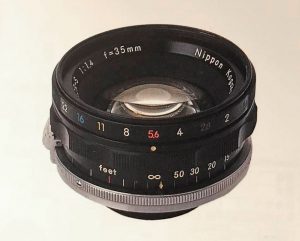
The lens has 7 elements in an unknown design. It could have been an evolution of another formula, or it’s own unique design. Nobody knows as there does not exist any official documentation on it. It has a design reminiscent of Nikon F lenses, including the color coded f/stop numbers and depth of field hash marks. It focuses down to 3 feet and used a 52mm filter.
The fastest 35mm rangefinder Nikkor lens was the W-Nikkor C 3.5cm f/1.8 which was produced in both Nikon rangefinder and M39 screw mount. It would remain Nippon Kogaku’s fastest wide angle lens of any kind until the F-mount Nikkor-N Auto 35mm f/1.4 lens in 1970.
Had the 35mm f/1.4 been put into production, it would still have been the world’s fastest wide angle rangefinder lens and likely would have been extremely expensive.
Like the word “prototype” suggests, each of these lenses are rare, but at some time, Robert has been able to handle them in person and can provide some level of technical information about them.
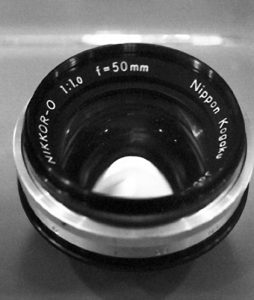
But there is one more lens that is so rare, Robert himself has never seen it in person. Not at Nikon headquarters, not at the JCII museum, and not at any NHS convention or meeting. That lens is the Nikkor-O 50mm f/1.0 rangefinder lens. The only images that exist of this lens were taken quickly, in poor lighting, by collector Mr. Tsuyoshi Konno in the late 1980s.
The only information we have about the lens is what can be seen on it’s beauty ring. Serial numbers 192301 through 192303 suggest these were the first, second and third made, the letter “O” in the name means 8-elements (one less than the Nikkor-N 5cm f/1.1 lens), and the use of 50mm instead of 5cm suggests this lens was produced in the early 1960s, possibly around 1961 when Canon released it’s f/0.95 “Dream” lens.
As these are the only known pictures, we cannot see the back of the lens to know whether it uses the internal or external mount and without knowing the filter size, it is difficult to gauge the size of the lens. From these pictures, the lens looks quite small, smaller than the Nikkor 5cm f/1.1 suggesting a simplified formula.
The existence of this lens is puzzling as one with the same specs was never produced for the Nikon F. The 5cm f/1.1 had already been in production since early 1956, and having an f/1.0 maximum aperture would have only amounted to an increase of only one-quarter of a stop. Perhaps Nippon Kogaku had already begun work on it when Canon’s 0.95 lens was released and Nippon Kogaku decided to scrap it. No one knows as Robert has never seen it, nor has any other member of the Nikon Historical Society. We don’t even know where this lens is today. It is truly the rarest of the prototype lenses.
To Be Continued…
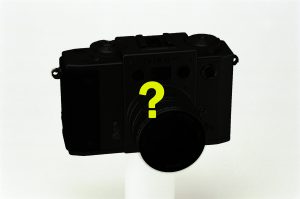
As you can see, the number and variety of Nikon rangefinder prototypes is quite vast, and this article doesn’t cover them all. There are others that were created with such minor differences from production models that there would be little to nothing to show, and others that we don’t even know about. There might even be more that currently reside in an even deeper corner of Nikon’s basement that have yet to be revealed.
Robert shared with me stories and photos of other Nikon prototypes from early mock ups of the Nikon F, an early Nikkormat without TTL metering, several F3 mock-ups, and even a very interesting APS film prototype that was never released, but that’ll have to wait until another day.
Until then, stay tuned for a future Nikon Prototype article!



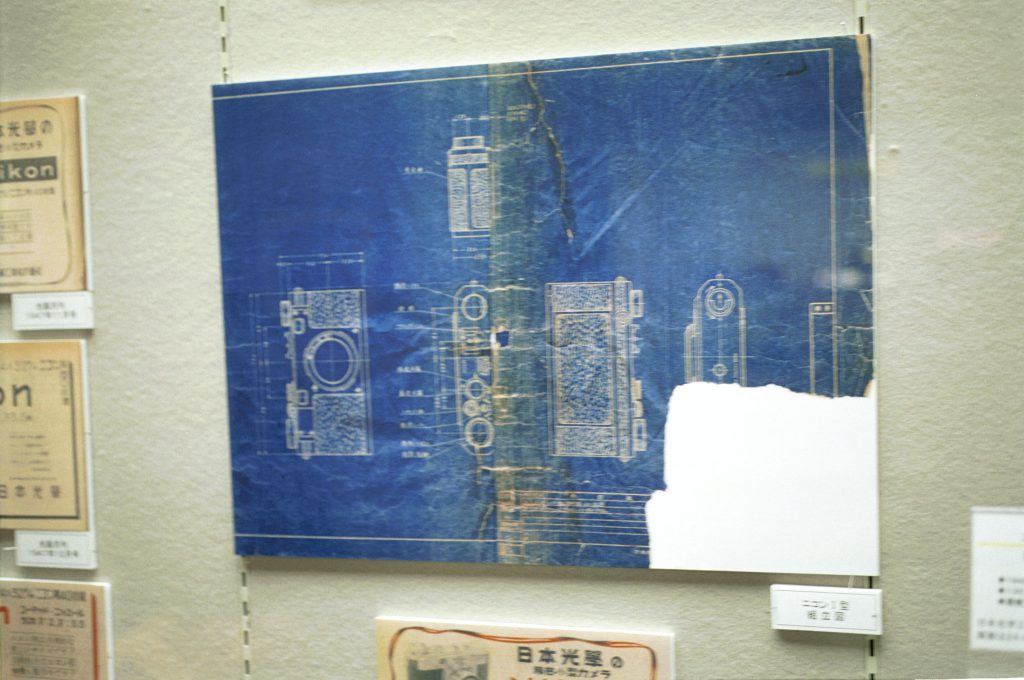
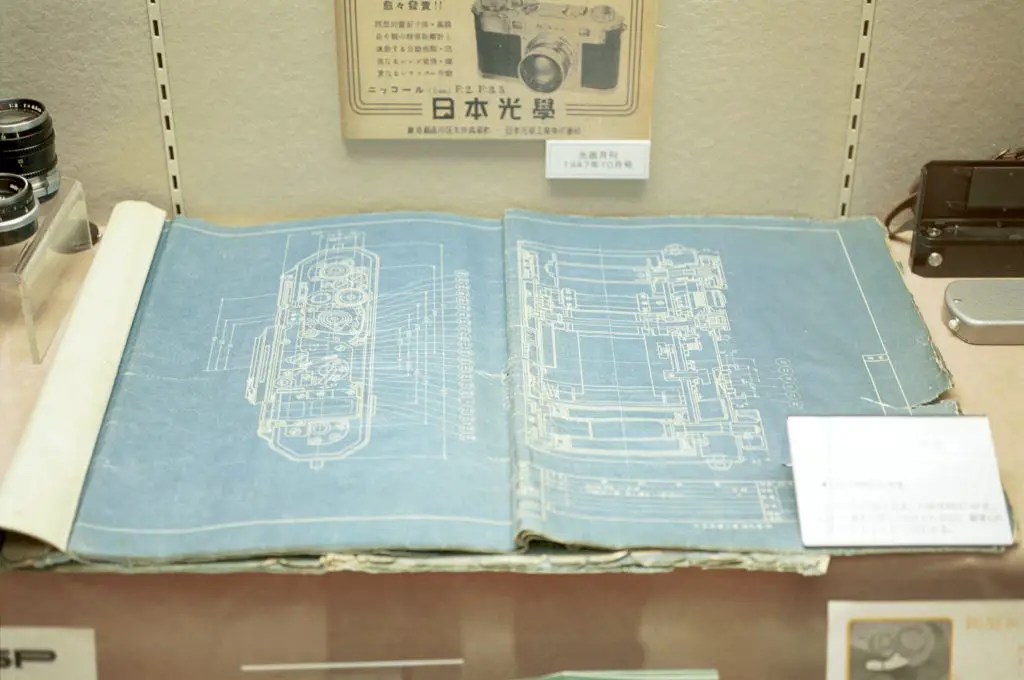

















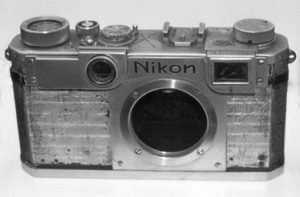
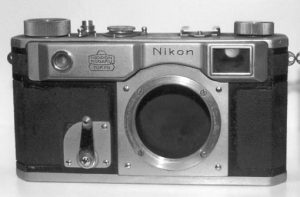
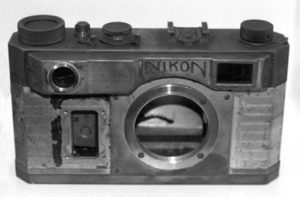






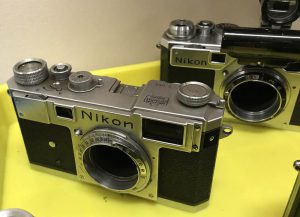
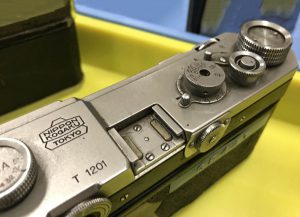
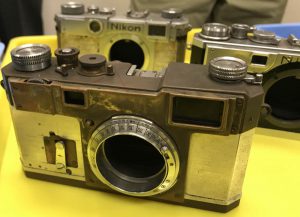










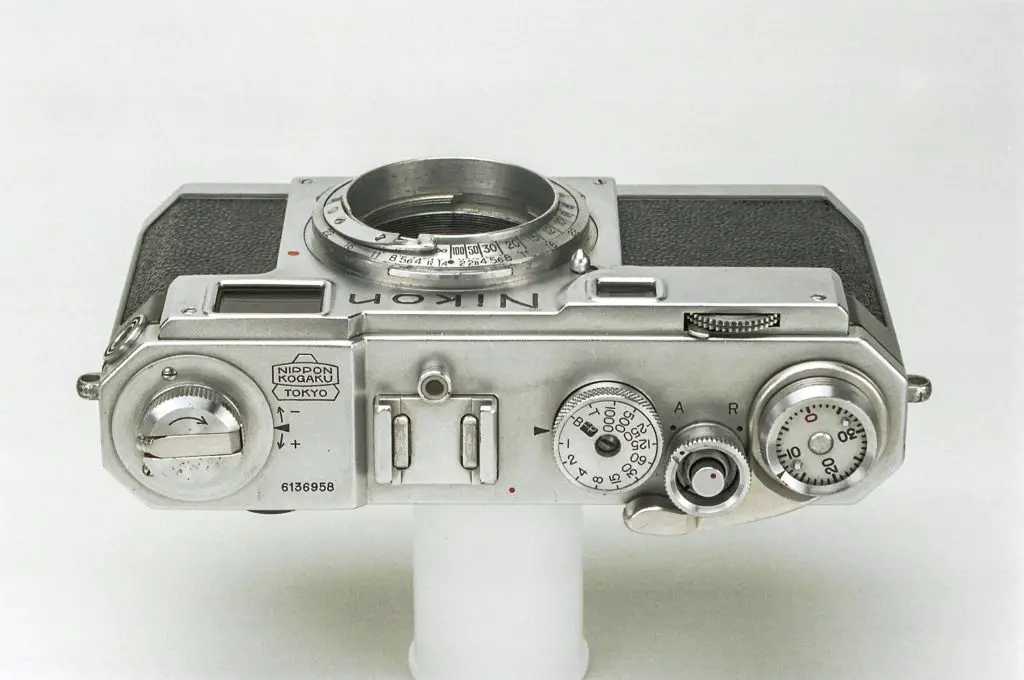
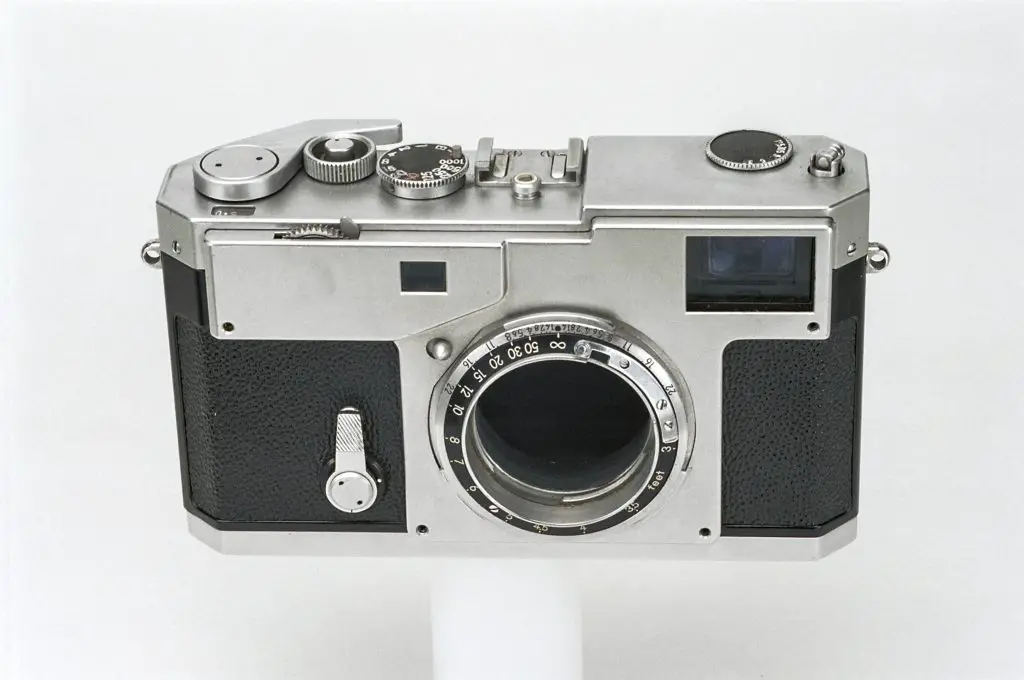
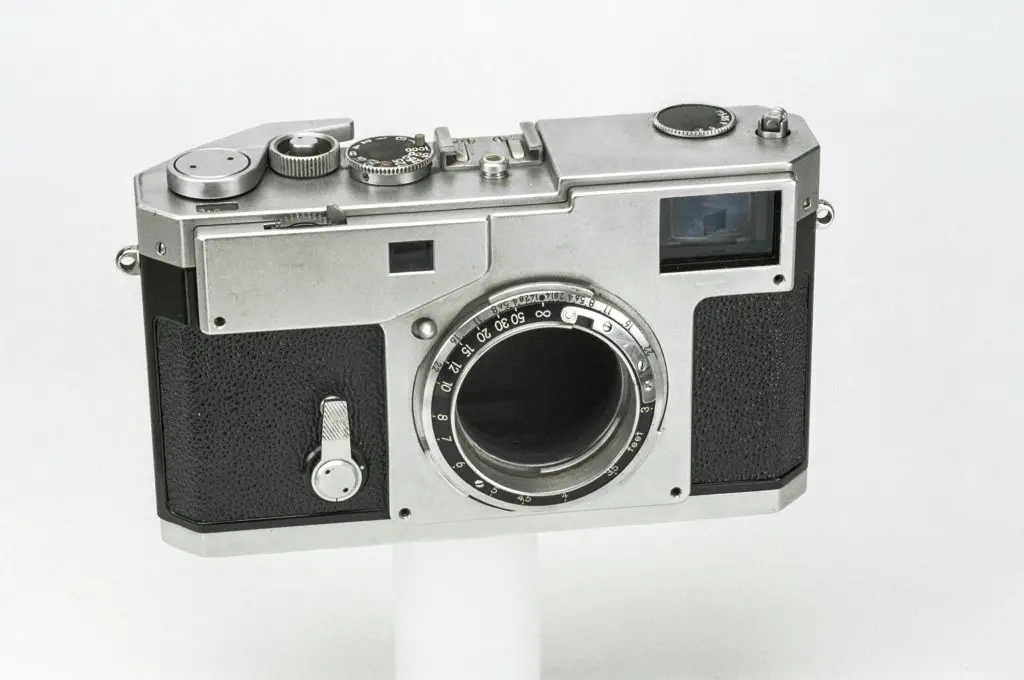
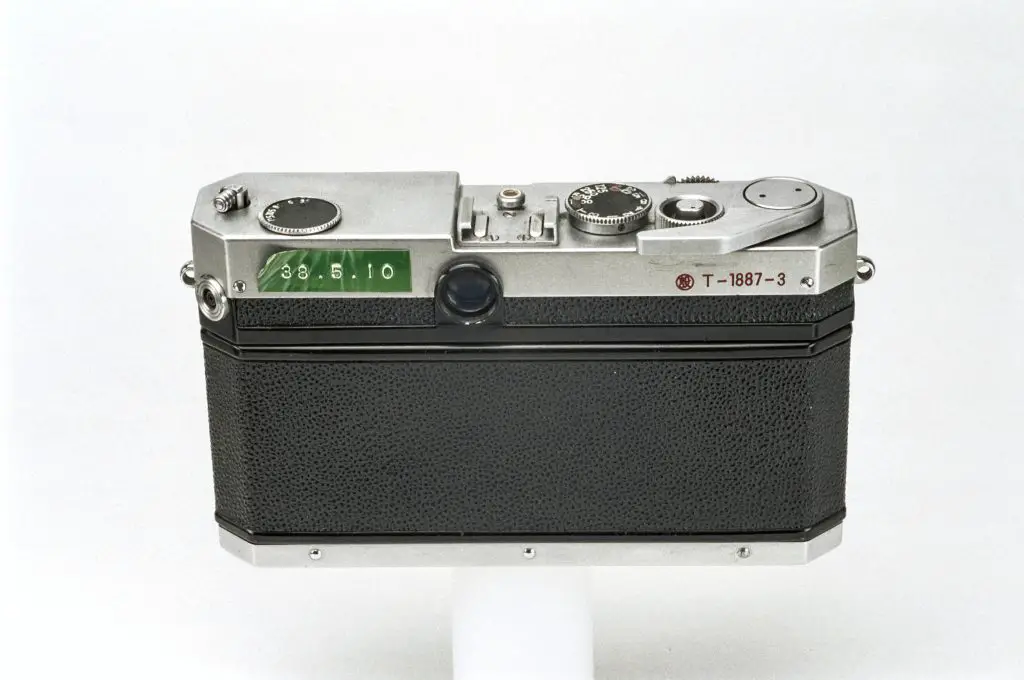
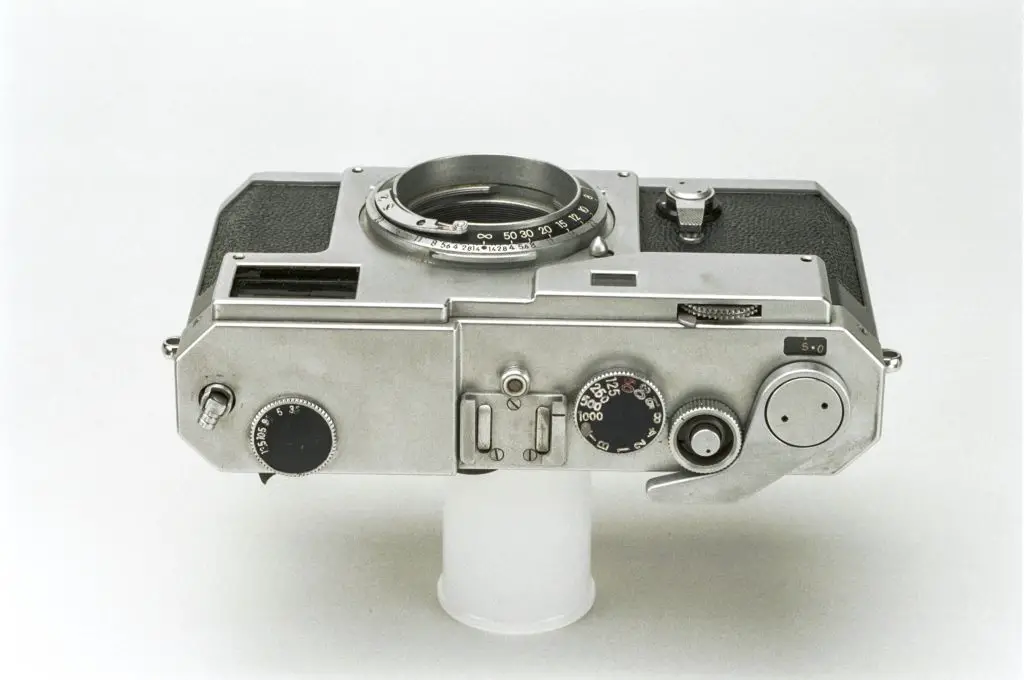


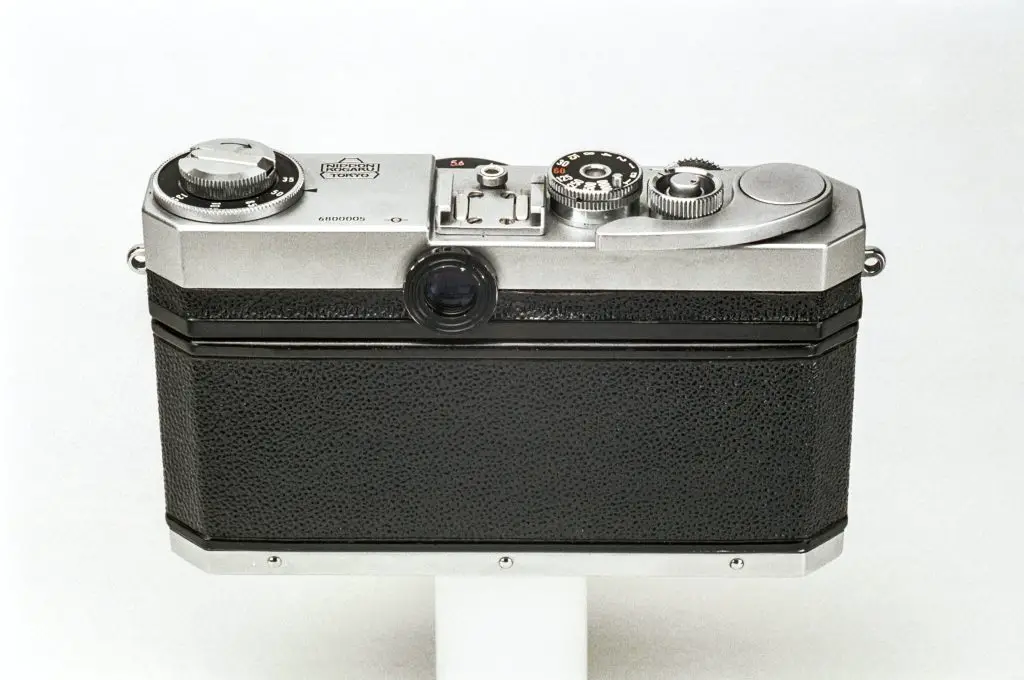
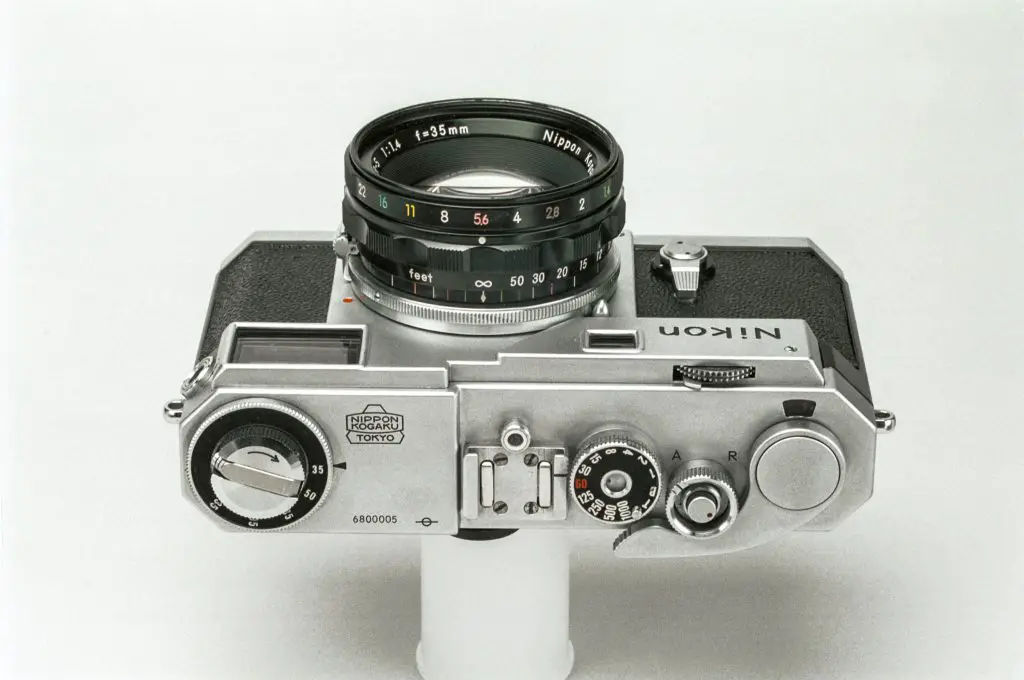
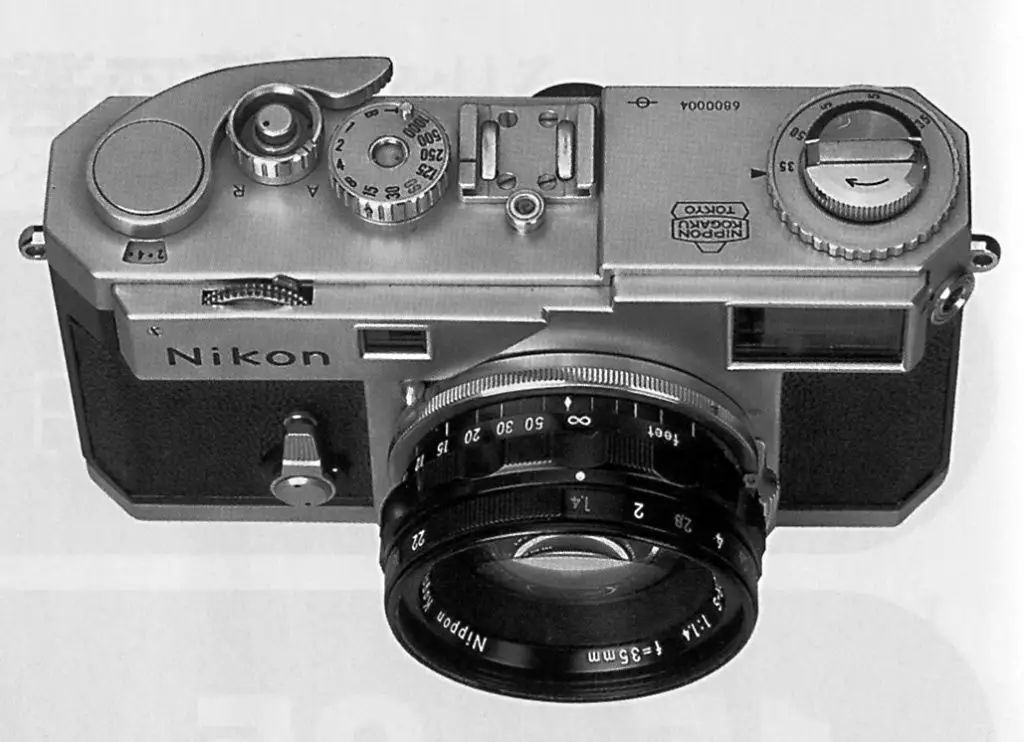

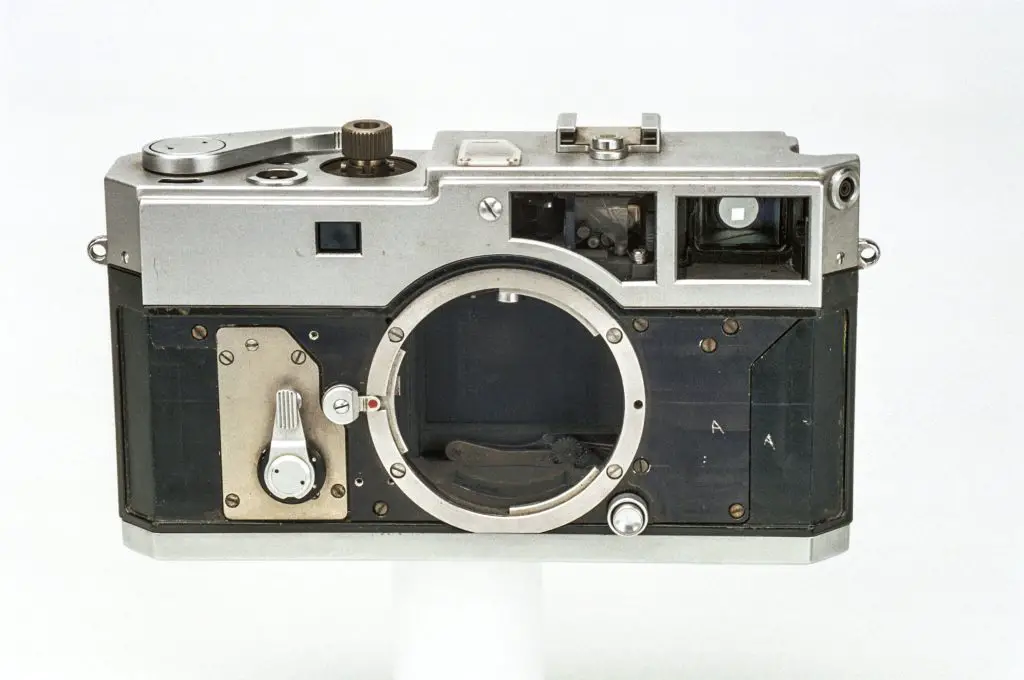
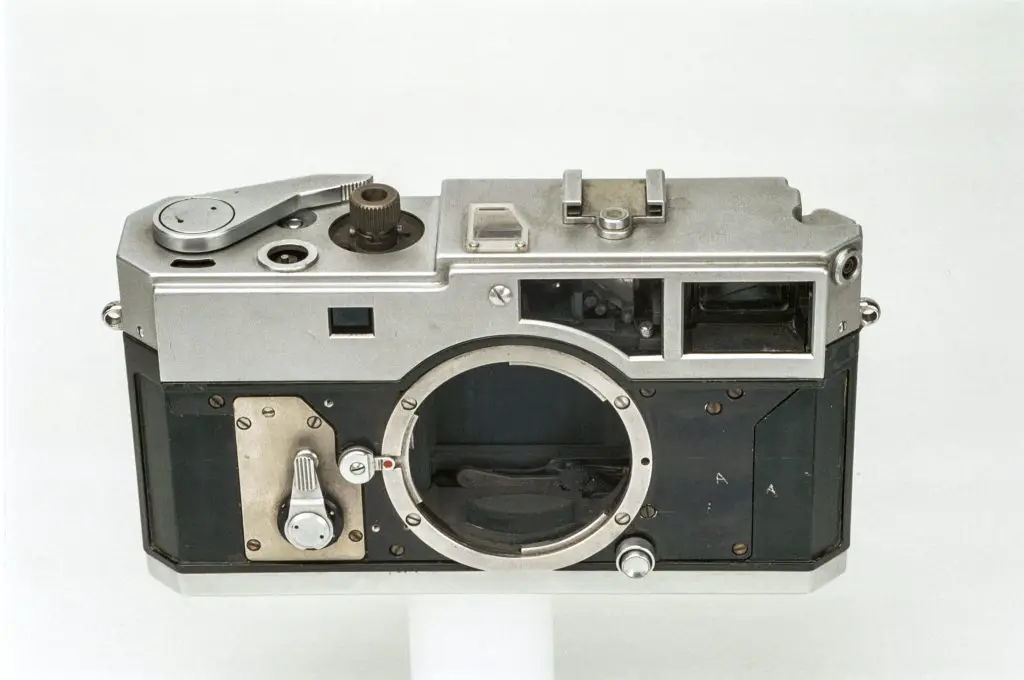
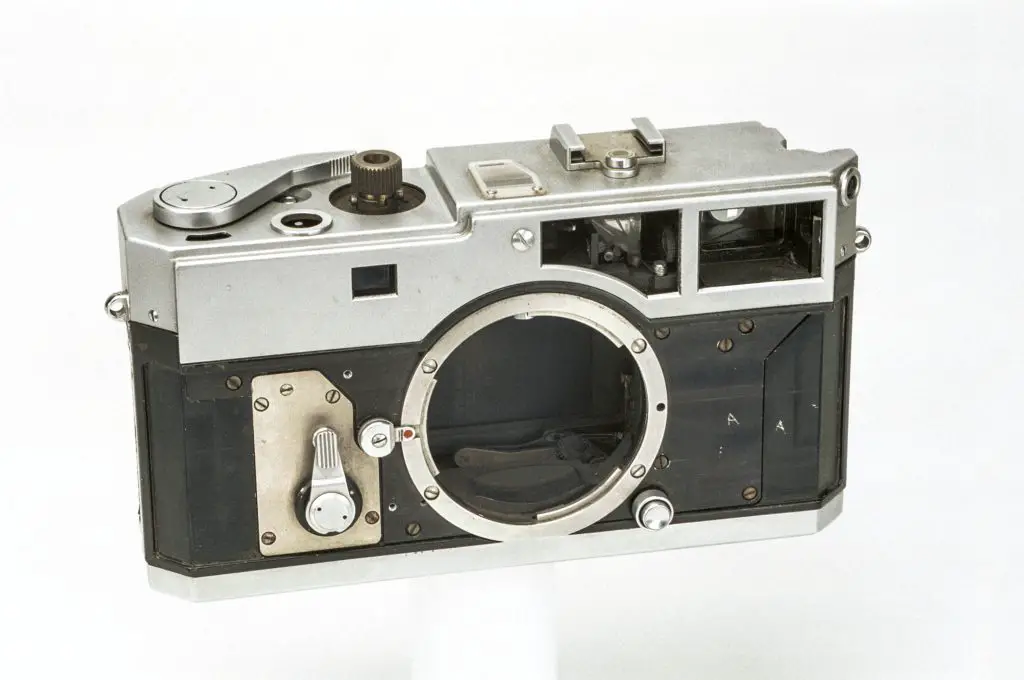
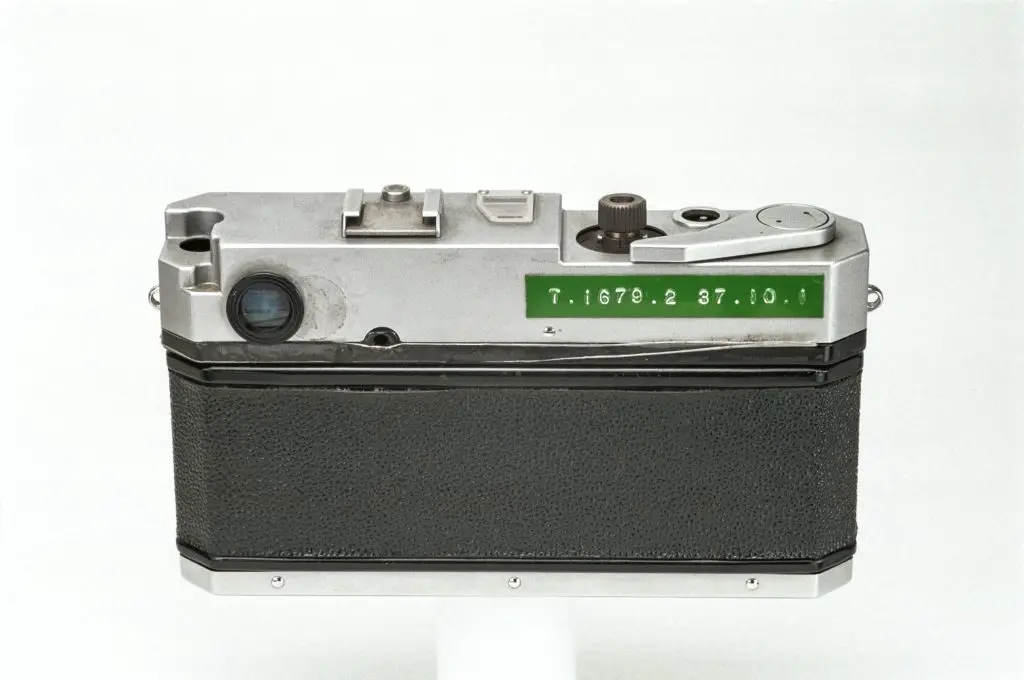
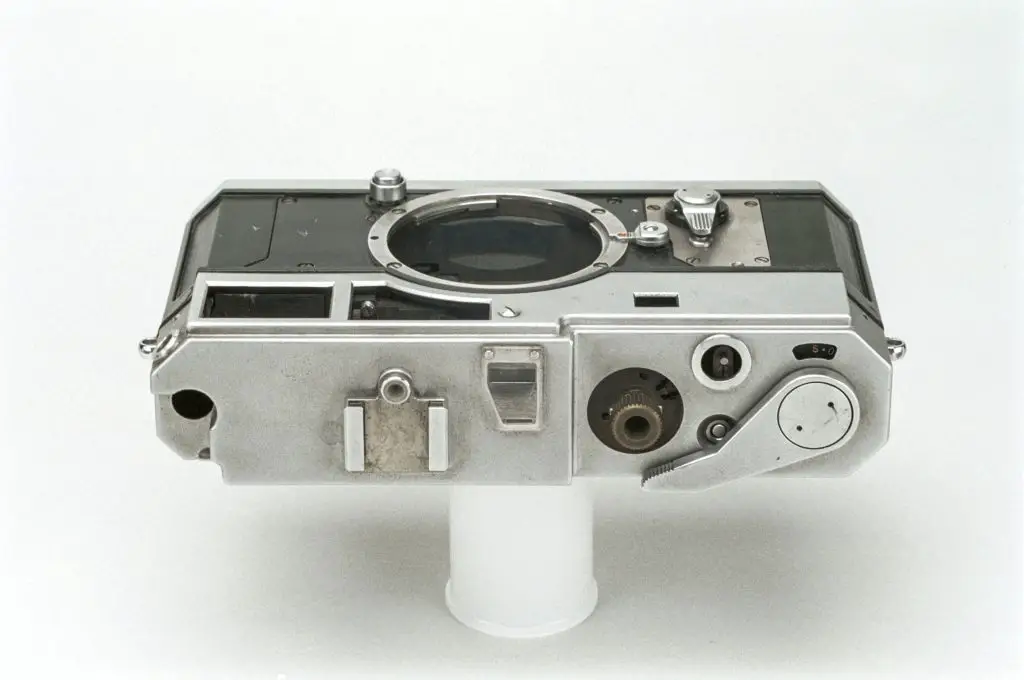
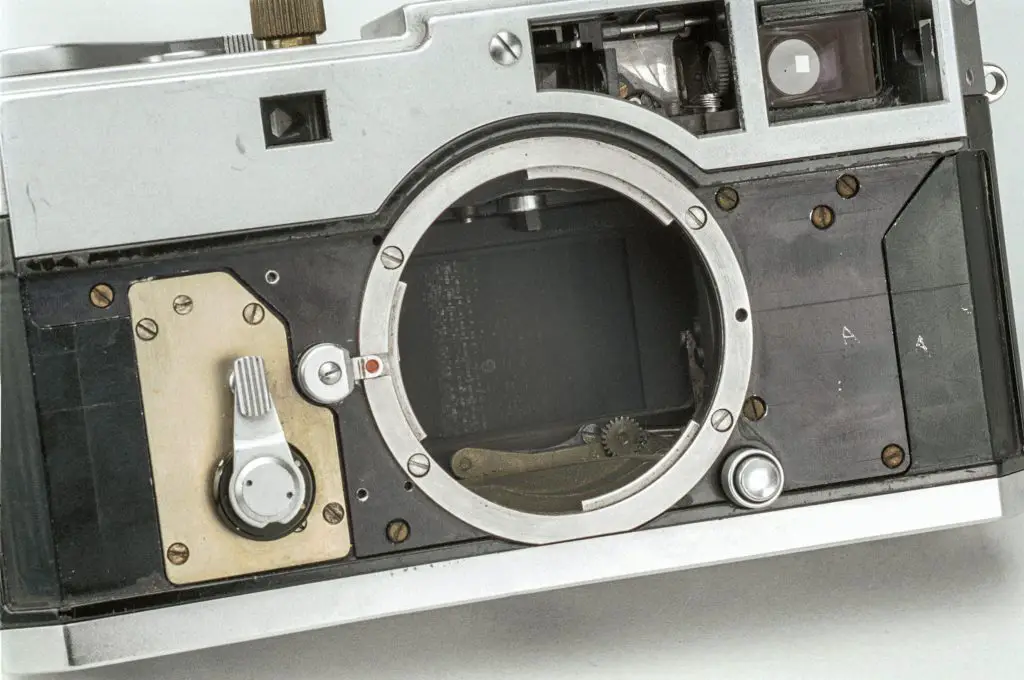
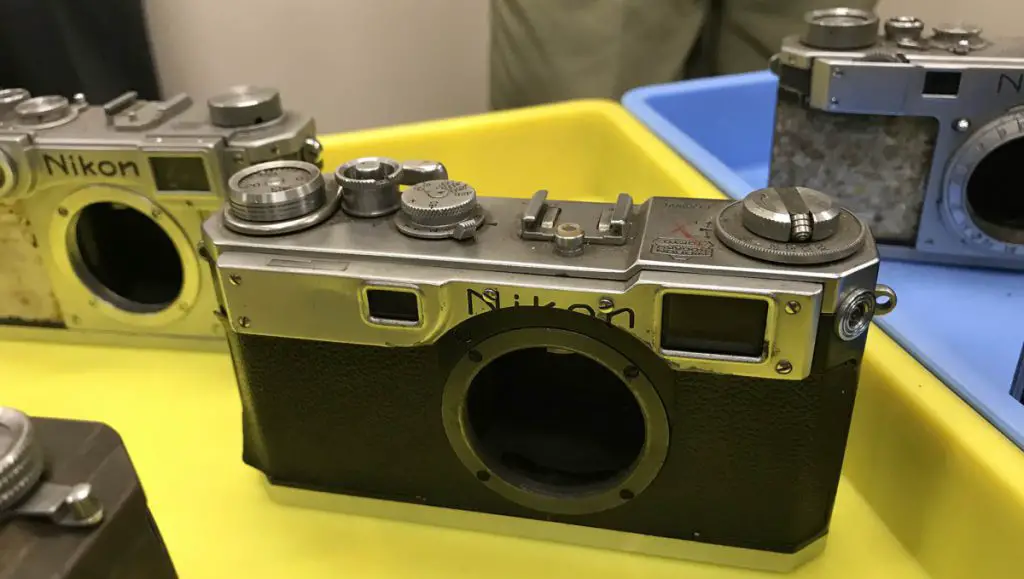

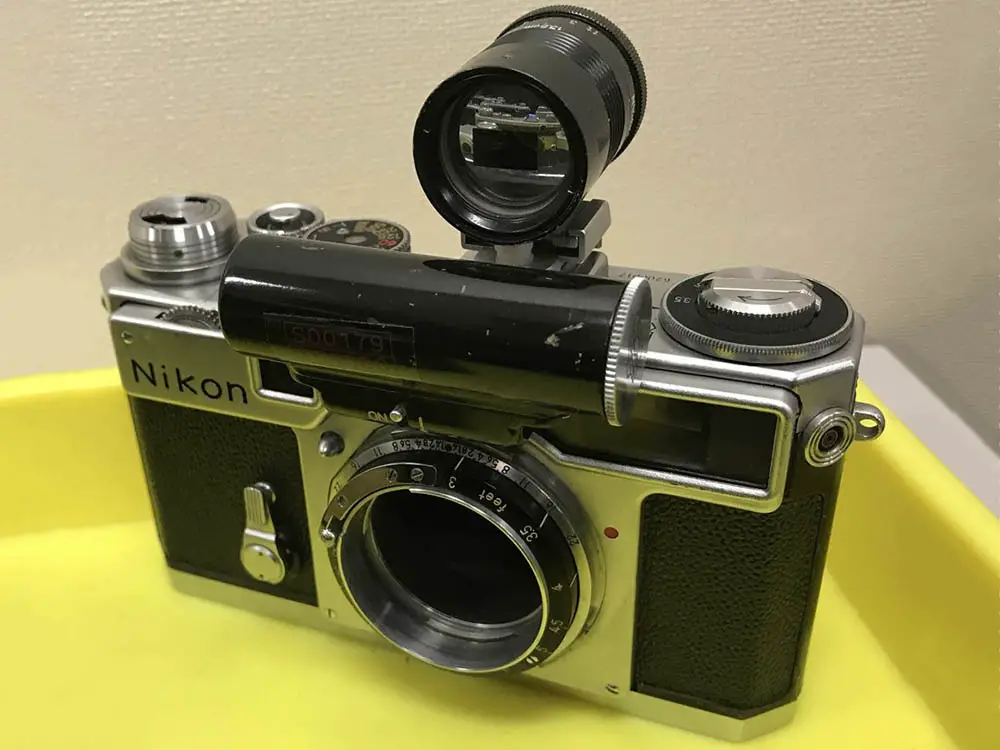
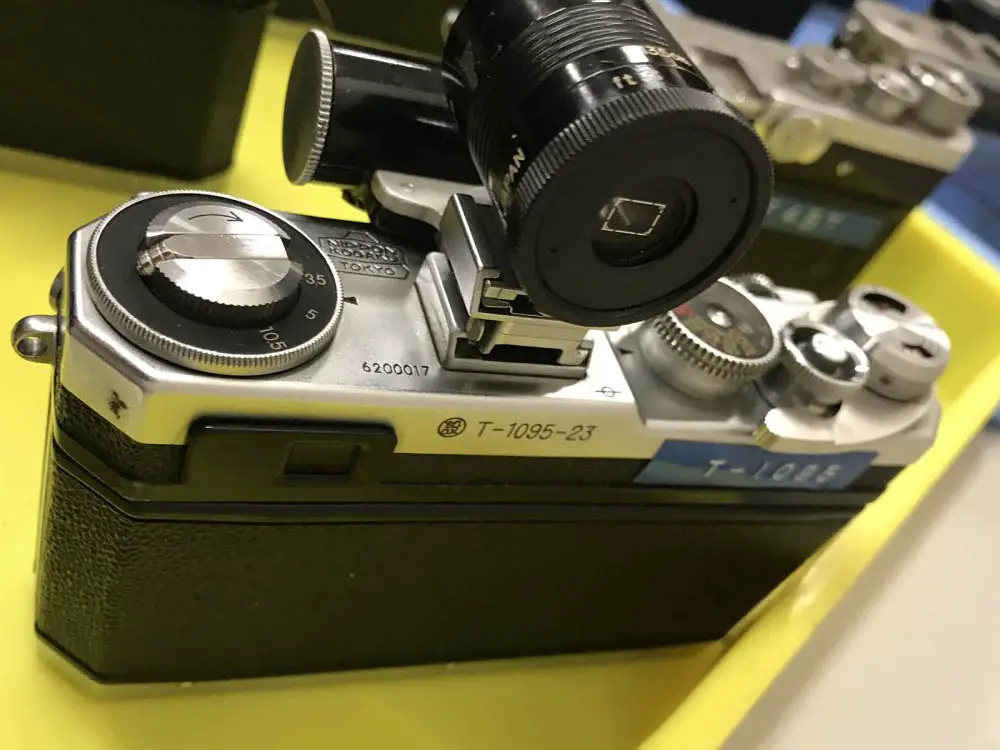
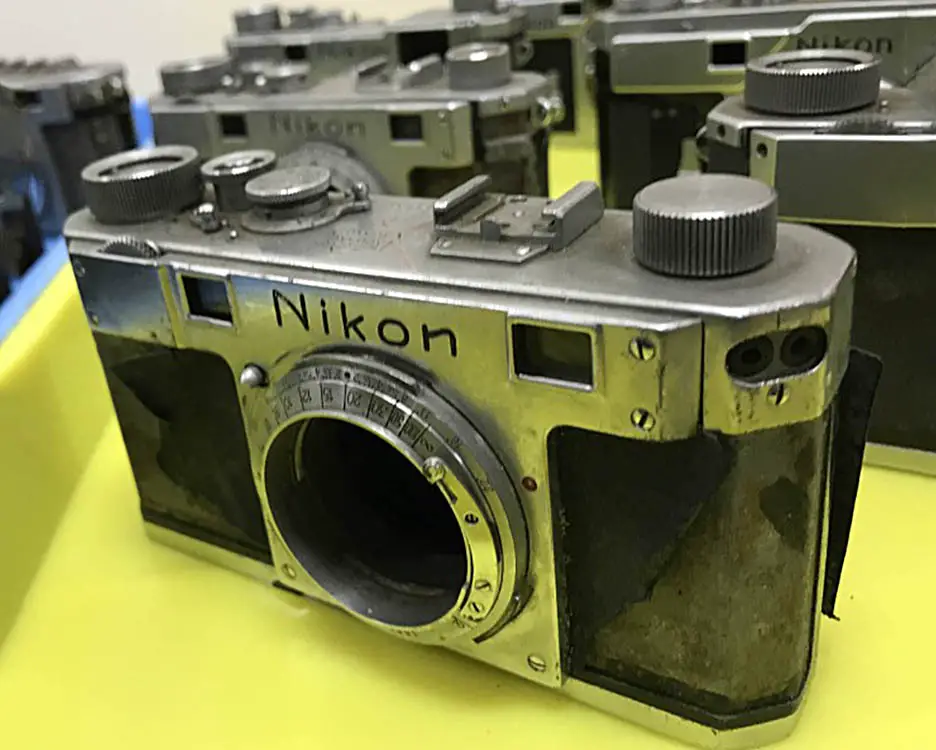

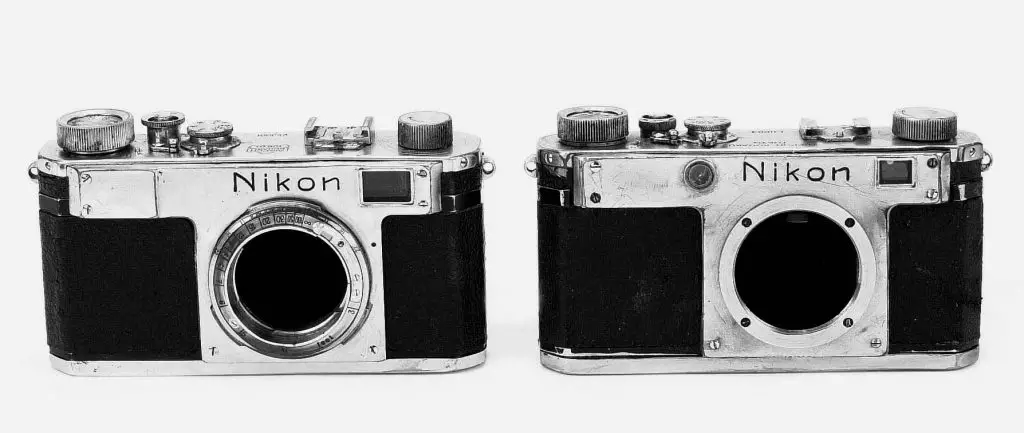
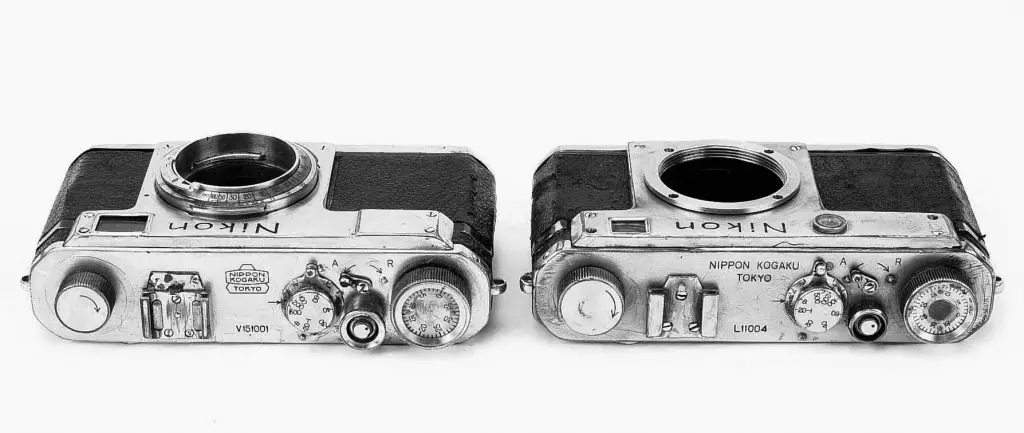
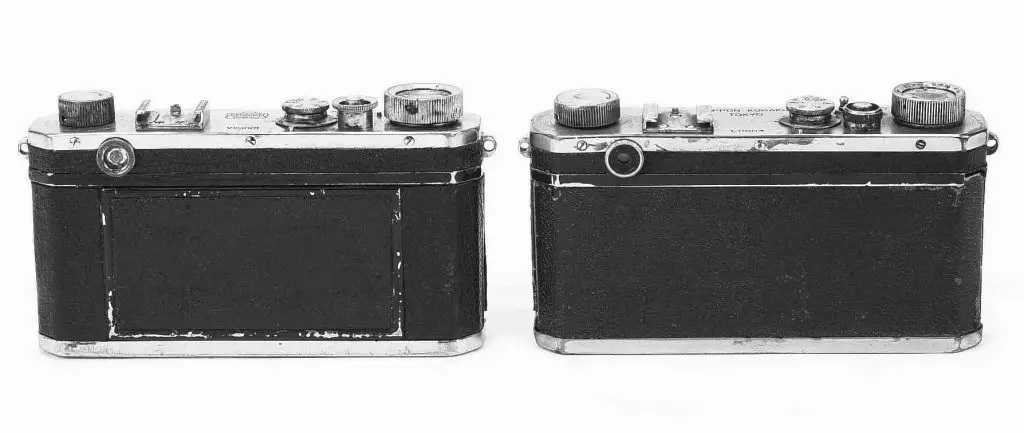
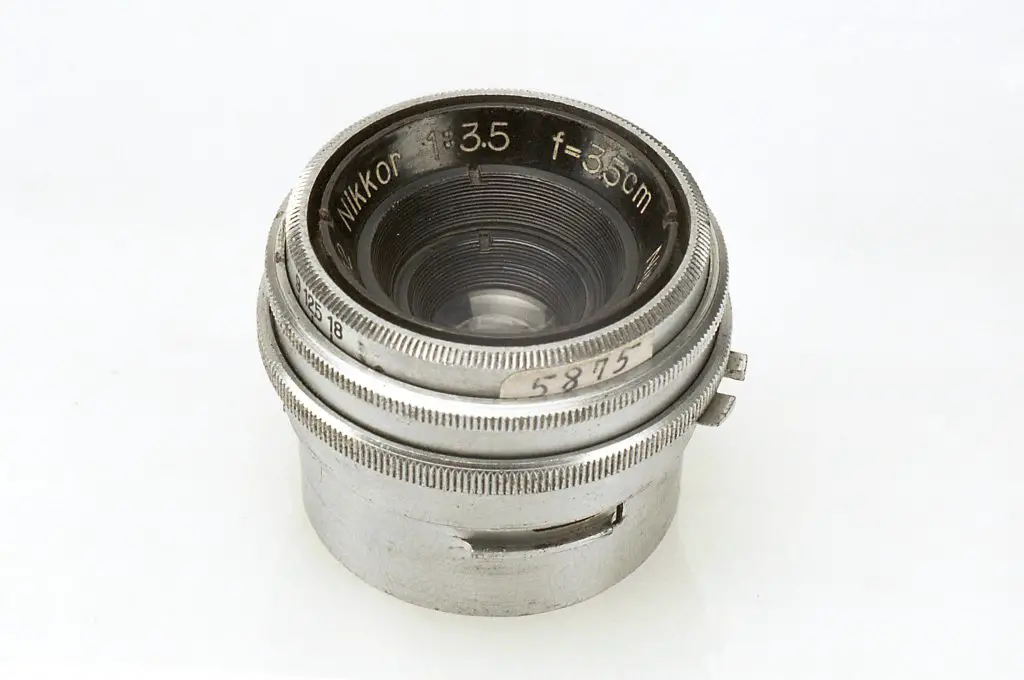
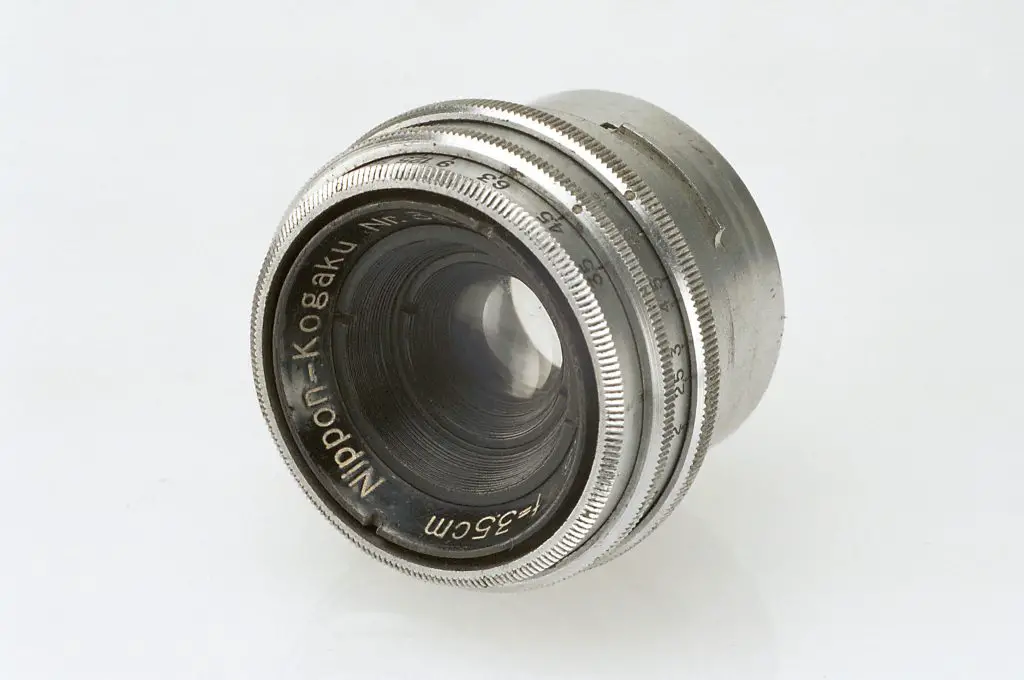
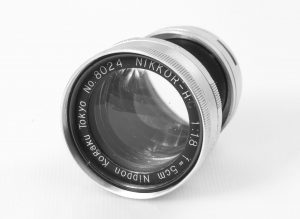
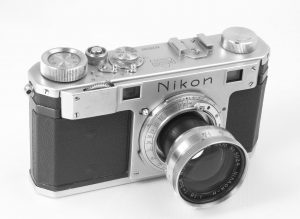
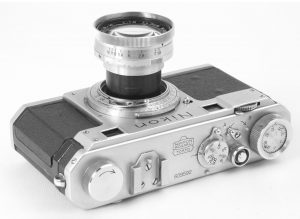

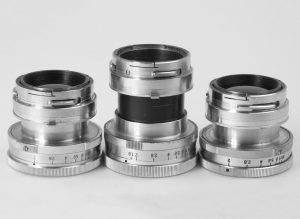
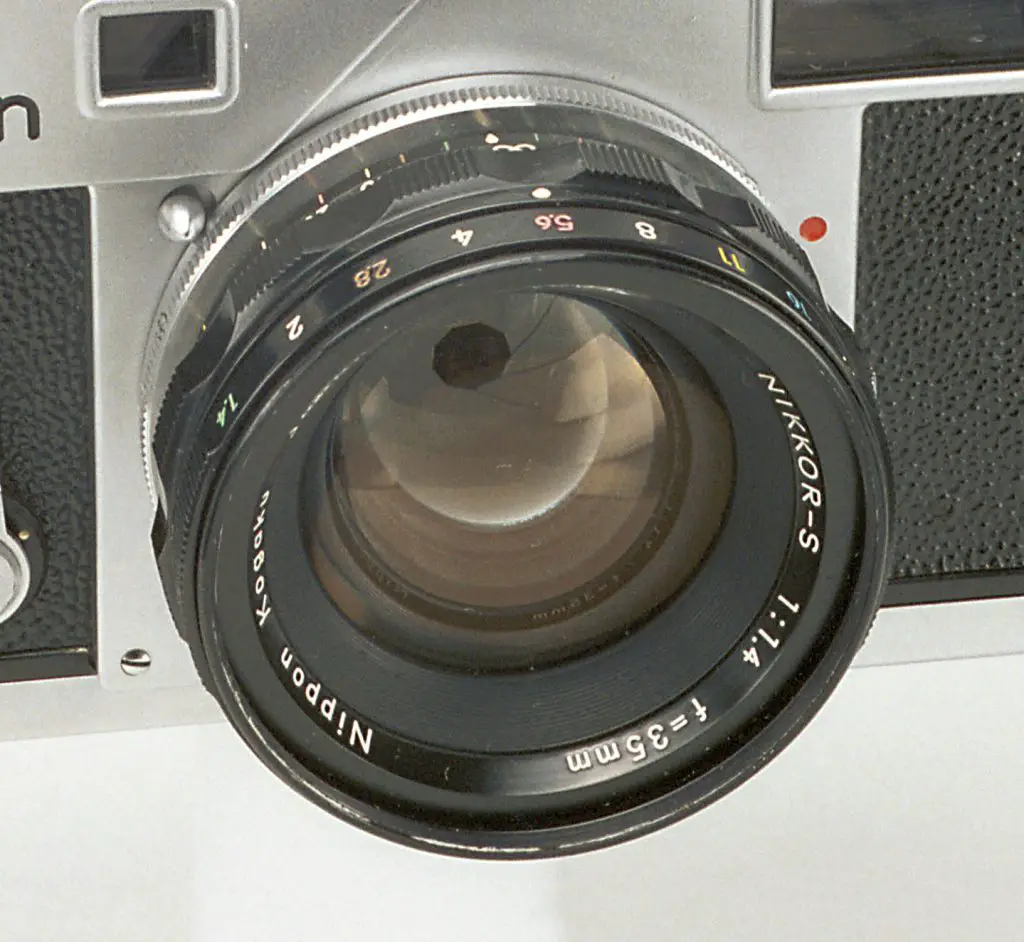
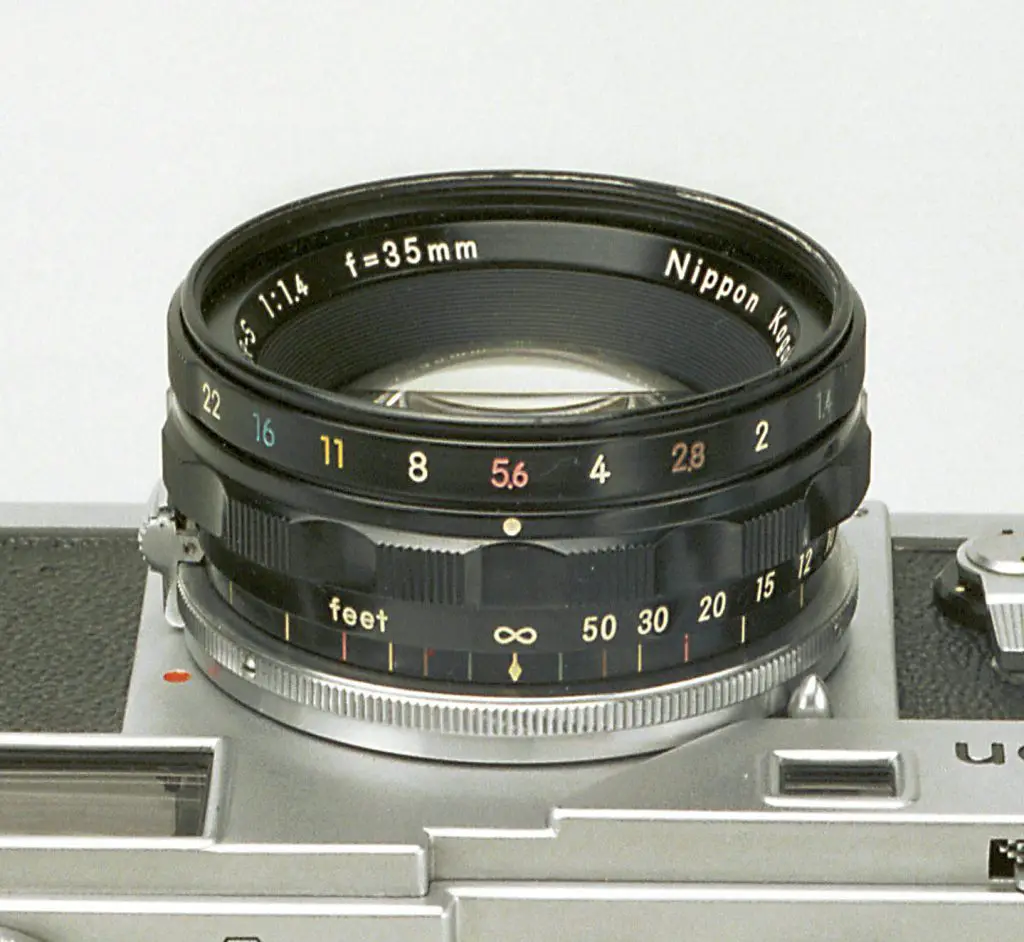
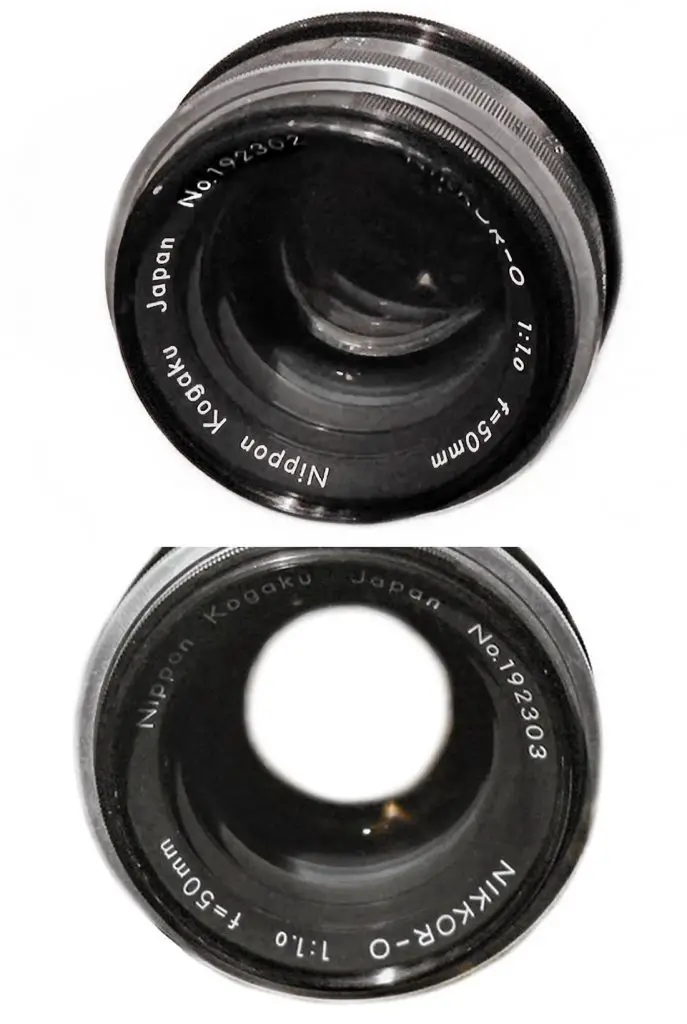
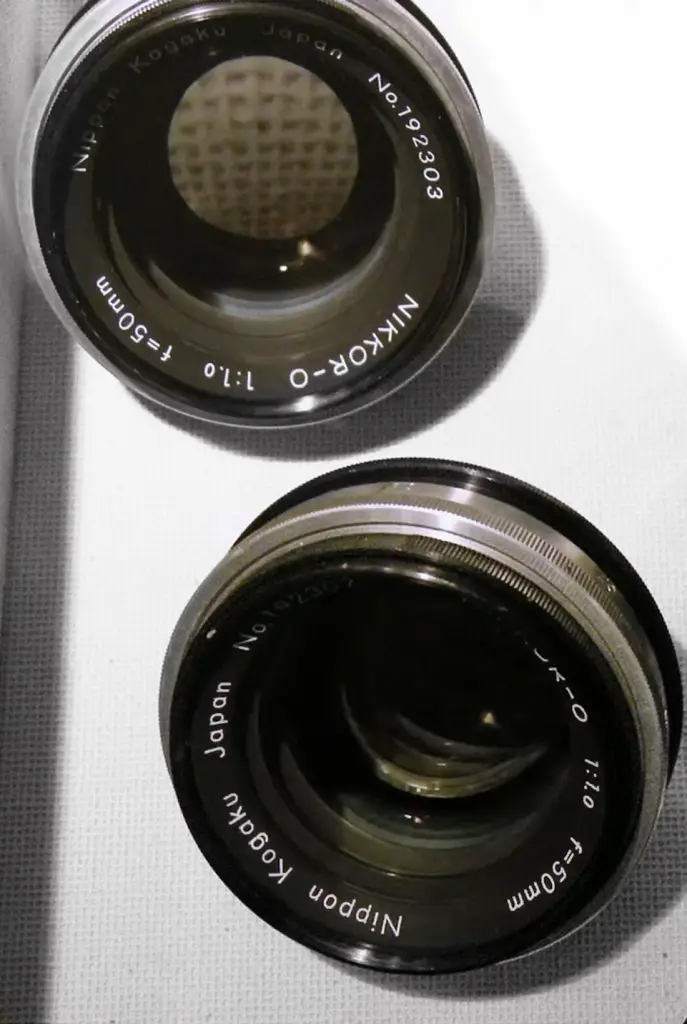
For me, the design clues lifted from Zeiss Contax are far more significant than to pass off as cosmetic. Remove the name badge from the commercially available Nikons and I’m willing to bet that 100% of people who, if asked, would see them as continuations of a Contax. I see this as blatant copying, which saw the likes of Leotax, Nicca and Tanack issue Leica look-alikes, too . The inner workings, shutter and rangefinder, may be different, but that’s really all. We have to ask ourselves why did Nikon adopt this design and not plough its own furrow? And to mess things up, whilst using the Contax bayonet mount, they adopted the Leica back projection distance for its lenses, making them incompatible on a Contax, or Contax lenses on a Nikon, without mush messing around and resetting lenses and the rangefinder.
Don’t get me wrong, I believe the Nikons are nice cameras, and I’d have likely got a couple of bodies were it not for the lens incompatibility issue making it difficult to use my Zeiss lenses.
The Nikon rangefinder was definitely inspired by the Contax, but it’s most certainly not a copy. The entire shutter is different (travels horizontally vs vertically in the Contax), the entire rangefinder and viewfinder system is different (different base lengths and overall construction), and as you noted even though the lens mount is basically the same, there are differences in the focus pitch.
I asked Robert why didn’t Nippon Kogaku just make an entirely original camera from scratch and it came down to economics. After the war, NK was down to one factory and a fraction of the work force they had prior to the war. They were also under heavy pressure from the US government to make products that could sell. They already had experience making lenses, so those were their primary source of revenue. While NK didnt want to all out copy a Leica or Contax, they could not afford the time or resources to create an entirely new camera 100% from scratch.
You’re probably right in that if you remove the name badges from a prewar Contax and a Nikon rangefinder and ask non camera collectors if they thought they were the same camera, some might agree, but again, this is just cosmetics. I show a picture of a Nikon S2 and 1939 Contax III side by side (yes, I know a Nikon One and Contax II would have been a better comparison, but I didn’t have access to either at the time) and I think that if you spend more than a few seconds looking at them, you’d see there’s more different about them than the same.
In regards to the focusing errors, I would hesitate to fully declare that Contax and Nikon lenses are incompatible as the differences only show up on telephoto lenses at close focus. Shoot a 50mm or wide angle Contax lens on a Nikon rangefinder and the images will come out perfectly in focus. Even with a telephoto, at infinity, there’s no difference, it’s only noticeable at close distances. Even Nippon Kogaku themselves, when they made Nikkor lenses for the Contax, they only differentiated between a “Nikon” and a “Contax” lens with the 85mm and longer lenses.
I’ll respectfully disagree that the Nikon is a blatant copy of the Contax. When nearly every aspect of the camera’s internals are 100% different, and there’s more different about the external cosmetics than the same, to me, I think it’s only fair to say that one was inspired by the other.
Mike, I know we’ll never agree on this, but I see design clues back to the Contax as being quite significant, yourself not so. The fact that the shutter and rangefinder are different, is hidden from view, and we only see the outer. This is what I mean by copy. If you mean by copy it has to be virtually identical such as is the case with the early Leotax, Nicca and Tanack, Fed or Zorki, copies of Leica then, no, the Nikon isn’t an exact copy, but the design clues are far too strong, IMO, to deny Nikon copied the idea.
I have models of all five versions of the Contax and next to a IIa, a better comparison and the one more likely to have been the model the Nikon was based on, one can more easily see the similarities of the Nikon. I fully accept that Nikon improved the innards, but other than the obvious necessity for a traditional shutter speed dial brought about by the new shutter, the Nikon only introduces variations on an original theme, with apologies to Edward Elgar. Later iterations of the Nikon took it to new a new level technically that Contax users can only admire, but then Zeiss had virtually given up on the Contax line.
The Nikon Range Finders were/are excellent cameras. As mentioned they are much to simular to the Contax to be just a coincident of production.
I have an interest in the Leica clones, The Nikon RF series did fall into that category as did cameras by Canon, Contax, Bessa, Voigtlander, Fed, Zorkii and my favorite clone the Leotax. Other range finder type cameras filled the market with excellent photography equipment but there are a few that have always stood out and are most collectable, even today. The Canon 7 and 7s, Nikon all S3 – SP series, and all Leotax offerings all A – T series. I have owned and still use my Leotax model F along with the wonderful Topcor Simlar 1.5 / 5cm lens. I also own a Leica IIIc, M3 (lsm) and M5.
My Nikon S3M (half frame format) and has become a shelf queen. I may have to put it back in service after reading this wonderful Nikon range finder publication. Thank you! David C.
Some lovely cameras there, David. Other than my five Contax rangefinders I usually am not a completist when it comes to my collection, so I tend to go for a theme, as with the Leotax TV2 Merite, Nicca 3-S, Fed 1 and Zorki 1 to complement my IIIf and Ic. Just a Tanack to finish off with, and perhaps a Canon.
I, too, have a Canon 7 and M3, and (heresy) I love the 7 more, although the M3 does feel better in the hand.
I prefer the IIIc to the M3 and will go to the Leotax F before my Canon 7 I see you listed a collectors wish list item, your Nicca 3-S. “Lucky!”
As a note of my user preference I still use my Zeiss Contessa and another favorite camera the Topcon 35L both are range finders and both are fun to use with excellent results. I picked up my Topcon 35L and Leotax F on my many trips to Japan while in the military. Although this was not my first camera it remains one I still enjoy using. Last year my grand daughter(10) was making her first trip to Austria, I wanted her to capture her experience on film and gave her my Werra IV. Easy to use and compact. I thought of giving her a Contaflex IV with a f/4 35mm Tessar lens, (I picked up many German cameras during several stopovers in Germany), but felt this was more than a novice photographer would want to start with. Unfortunately, digital has won out and she still has not finished a roll of film still in the camera. I have to schedule photo expedition once all this isolations is over. David C.
Damn, you and Terry are making me want to load some film into my Canon 7! I’ve actually never shot it before.
Other M39 cameras in my collection that I love but haven’t yet reviewed are the Tower 45 which is a rebadged Nicca 5L with a rapid wind lever and M3 style door on the back, and the Leotax K. The Tower 45 is in excellent condition and is a lot of fun to shoot, and the Leotax, while the lowest featured model in their lineup, it’s simplicity gives it charm. Its kinda like shooting a Kodak Brownie, except in a Barnack style rangefinder!
Interesting comment about the Nikkor and Simlar f1. 5 lenses. What’s the betting that the original Zeiss 1.5 Sonnar wasn’t the progenitor?
Nikon has the “Look and Feel” of a Contax, but hardware implementation is completely different.
I changed the shims on the helical of a Nikon S2 and calibrated the viewfinder to use with my Zeiss Contax lenses. It works well enough to use a 13.5cm on the S2. I normally keep a 50/1.5 Zeiss-Opton on it. The other four S2’s- Nikkor 5cm F1.4’s.
Interesting to see the Simlar 5cm F1.5 mentioned- I have an early one, the 74th. It has F16- and some internal scribes of “10”.
I’ve read that both the Nikkor 5cm F1.5 and Simlar 5cm F1.5 can be traced back to 1937.
Brian, interesting reading. Were you aware that the first f1.5 Sonnar released with the Contax 1 was later modified slightly for use with the II and III? The first version does not take the usual 40.5mm screw-in filters, but instead needs 42mm push-on filters, and for some reason the first lens only stops down to f11, as opposed to f16 of subsequent versions. I only found this out last year when I finally completed my Contax r/f lineup with the Contax 1, v.7 export model, and which came with this lens. I’d taken delivery of a 40.5mm UV as a lens protector before the Model 1 arrived, only to discover it wouldn’t fit, very much to my surprise.
This can’t be a post-war Opton modification as the f1.5 Sonnar on my early wartime Contax III has the mods. Any thoughts?
Mike, if you didn’t spend so much time with writing your great articles for us you just may get time to run a film through the Canon 7. It would be interesting comparing notes, I gave mine in an article on Hamish Gill’s site 35mmc.
This is really great stuff Mike
A beautifully detailed discussion. Wonderful models to see and cause one to think.. I’ve used the “F” since 1971.A year ago I purchased a 67/68 Model “F”. It works way smoother than my original “F’s”.It has the Nippon logo.
The standard lens from same period..
Were they copies? No! Made a better shutter than Leica.
Nikon name is a thing though.. turn “N” on side it’s a “Z”.
“Z….” IKON. anyway mine still in use..
Thanks for the comments Jason. The belief that the Nikon rangefinder was simply a Contax copy is still very prevalent, despite the fact that all you need to do is put them side by side to see how different they are, and in use, there’s no comparison. I am glad you enjoyed the article.
Mike, stepping away from the RFs for just a moment, Jason raises an interesting point. I have two Fs – one well-used ‘Apollo” that I bought used in a camera store in Littleton NH at the bottom of the film camera market, and my father’s mid-60s F. The later one is more ….violent…. in its action, with perceptable mirror bounce on return. It’s been recently CLA’d and inspected and pronounced sound and fit, not overly worn. Dad’s old F is not quite a silky as the S2 of course, but it’s a got a lot smooth shutter action. I’ve always assumed this is just the difference between one that’s seen tens of thousands of exposures vs. one that’s seen thousands. But now Jason’s comment makes me wonder if the internals might be somewhat different as well. I’ve not seen this addressed anywhere else – any substance to it?
I don’t honestly know what, if any, internal changes were made to the insides of the Nikon F, but the likelihood of there being differences does seem plausible. For, the Nikon F was produced for over 12 years, so I am sure changes and improvements had to have been made at some point. Not to mention, Nippon Kogaku was no stranger to mid-model changes with their rangefinders as early models had different rubberized coatings on the shutter curtains, different applications of chrome on the body, and with the Nikon S2, some later models added the motor drive capability without advertising that as a new feature. So I’d say the differences you’ve noted in the feel between the two different cameras could very well be due to differences inside the camera.